Wrapping 2021 and Looking Ahead
What a long, strange year it’s been! Let’s take a look back at the dominant 2021 trends and anticipate what 2022 will likely bring.
While it’s hard to predict with clarity, given some major unknowns, here are some hot takes from across the industry and the country from unique perspectives:
- San Diego-based designer Tatiana Machado-Rosas, Jackson Design and Remodeling’s design department manager;
- Long Island, New York-based kitchen and bath designer Susan Serra;
- Home Technology Association CEO Josh Christian;
- Bob Gifford, business development director for luxury retailer Hastings Tile & Bath in New York City;
- Susan Chung, research v.p. with the American Society of Interior Designers;
- Boise, Idaho-based custom home builder Emily Clark of Clark & Co. Homes.
Wellness Trends Accelerate
Designers have been focused on wellness for decades with interest from some clients, but the pandemic really drove its importance home. Literally! “For 2021, a continued focus on health and hygiene helped drive the kitchen,” observes Chung. She also sees its importance elsewhere, noting that “the bathroom really became a place to escape the stress and fear of the outside world.” Wellness showed up in outdoor, work from home and mindfulness spaces, too. “As the home became a hub for all types of activities colliding together, homeowners were looking to design as one way to alleviate stress and promote tranquility,” the ASID executive concludes.
Beyond the spaces noted above, wellness showed up in related rooms. “The switch from what had been called the ‘mud room’ to what is now called the ‘utility room’ or pre-wash area; so many people wanted a location to drop groceries and sanitize items before heading into their homes,” shares Gifford. This is tied to an increasing interest in hands-free functionality, he explains: “Soap dispensers, faucets, hand-towels – anything and everything that gave people a sense of comfort and control over their environment.”
Kitchen Design Trends
“Multipurpose kitchens with open floor plans continued to be a strong trend as clients look to make their kitchen the vibrant heart of their home,” says Machado-Rosas. “Integrating smart technology, particularly with more people using the kitchen space to work from home or attend virtual classrooms, became even more essential. In addition, clients had a renewed interest in keeping their spaces hygienic, which led to a desire for easy-to-maintain materials for countertops and flooring,” she adds. The design manager conversely sees a resurgence in natural stone for sinks and countertops, attributing it to a desire for the sense of calm that comes from a connection to nature.
Across the country, Serra sees three dominant trends: “Wellness on steroids, cooking convenience and visual comfort.” Health and cleanliness were the top concerns she was hearing from clients. This included “performance materials in surfaces, as well as appliances [and fixtures] that promote healthy living and preserve our health, such as renewed attention to proper ventilation, enhanced touchless faucets and larger sinks going mainstream – often with two faucets” as a few examples.
Changes in shopping and eating habits are also influencing kitchen design, the New York designer believes. “A new hybrid type of cooking has emerged; time (but not too much) is being taken to create healthy homemade meals from fresh, quality foods, assisted by smart, efficient appliances. The purchase of a freezer for bulk food storage, better cabinet storage solutions and designing in more countertop space creates a near utopia for one or more cooks.”
Visual comfort is also a trend, Serra has observed. “As the kitchen has taken on more lifestyle functions in the past 18 months, homeowners are much more open to creative design solutions,” she shares. This has meant larger windows, nature-inspired texture and finish mixes, and comfortable dining areas with flexible designs or banquettes. “The transition of the kitchen aesthetic to more seamlessly integrate with surrounding rooms lessens the perception of the kitchen as workspace and nudges it more toward a living space,” she suggests.
Clark has also seen kitchens evolve, she comments, citing an “expansion of the scullery or the working pantry, work zones as opposed to a work triangle, and multiple mini-kitchens for multi-generational living.” Antimicrobial counters, touchless faucets and chef sinks also support healthy living and cooking, the home builder notes. Natural finishes, warm woods and creative design solutions with saturated cabinet colors are showing up in her northwestern region too.
Bathroom Design Trends
“The emphasis in bathroom design has been to create a highly customized space that communicates joy and tranquility,” Machado-Rosas observes. “Clients have been seeking a personal retreat with a spa-like atmosphere where they can truly relax.” These have included steam showers, heated floors, statement tubs – sometimes custom – and premium features catering to clients’ personalized needs and desires. Natural materials show up in these luxury bathrooms, too, the San Diego designer notes. “Balancing porcelain or glass tile with natural woods and stones and amplifying natural light have been popular,” she adds.
Clark sees the trend toward personalized luxury in her Idaho homes, as well. These include “sculptural soaking tubs, steam showers with light, sound and aromatherapy, tiles with hand-cut looks and subtle tonal differences, reeded or fluted textures, oversized area rugs and diaphanous drapes.”
“All during 2021, we worked with designers who wanted (and still want) the flexibility to customize their projects by using different colors and finishes for their vanities,” Hastings’ Gifford recalls. “For tubs, the solid surface materials remain popular because they have a supple texture and they are easy to clean and maintain.” The New York retailer also saw strong interest in hands-free faucets with white finishes and versatile wall-mounted vanities.
Technology Trends
Technology continued to trend in kitchen and bath projects, and it shows no sign of slowing. Smart features have a growing presence in kitchens and bathrooms, Home Technology Association CEO Christian notes. “We are seeing entertainment products being installed in kitchens like waterproof TVs built into the counter backsplash, charging docks, tablets for cooking tutorials or recipe surfing, built-in ceiling speakers or a simple wireless speaker on the counter.” He is also seeing sleek, integrated outlets, lighting keypads and flush-mounted concealment systems so that the room’s electronics are present but hidden.
“With bathrooms, we are seeing a lot of circadian rhythm lighting being installed so that time spent in the bath is consistent with a homeowner’s sleep cycles,” he says. Additional bathroom technology trends cited by the designers include smart toilets, enhanced shower systems, built-in sound and lighting systems and smart shadings.
Machado-Rosas sums up the situation this way: “We saw a significant increase in clients asking for fully integrated smart technology in their homes. Because of the combination of enhanced affordability and ease of use, we expect to see this trend grow exponentially in the years to come.”
Predictions for 2022
ASID’s Chung is anticipating that flex spaces, universal design, locally sourced products because of supply line and sustainability concerns will trend in 2022. She also believes that the pandemic has increased the perceived value of designers in helping their clients navigate the challenges brought about by the pandemic.
HTA’s Christian anticipates a strong push toward wellness technology, indoor and outdoor home theater spaces and the death (at least short-term) in ‘just-in-time’ delivery systems. He also sees designers working earlier in the process with technology professionals to more seamlessly integrate their projects.
Hasting’s Gifford predicts the increasing importance of video tours to replace travel and live events where possible. He also anticipates more integrated sink/vanity options, solid surface tubs continuing their popularity and, though no one wants to hear this, he notes, price increases across all products because of the increased costs of raw materials.
Among the designers, Serra anticipates appliances with upgradable technology, more dining space in kitchens, and more storage for multiple cooks. Machado-Rosas expects to see technology show up in more products and for smart home systems to become more affordable, a continued attention to creating calming spaces, multi-purpose rooms, larger pantries and customized bathrooms. She also expects minimalism to trend strongly for its low-
maintenance benefits.
Home builder Clark expects to see more hidden kitchens, induction, multi-function appliances and less upper cabinetry. She anticipates bathrooms getting more artisanal materials, sound and light enhancements for spa effects, and even what she calls family wellness suites. These would resemble high-end spa facilities with steam or sauna areas, grooming stations and central shower stalls.
While 2021 kept many design industry professionals at home, dealing with inventory and other challenges, 2022 is already shaping up to be a more active, in-person kind of year. The Kitchen & Bath Industry Show, paired again with the International Builders’ Show, will meet in person in Orlando in February. Exhibitors reflecting the trends observed by these professionals will be on hand to share their wares. I’ll be there. Will you? 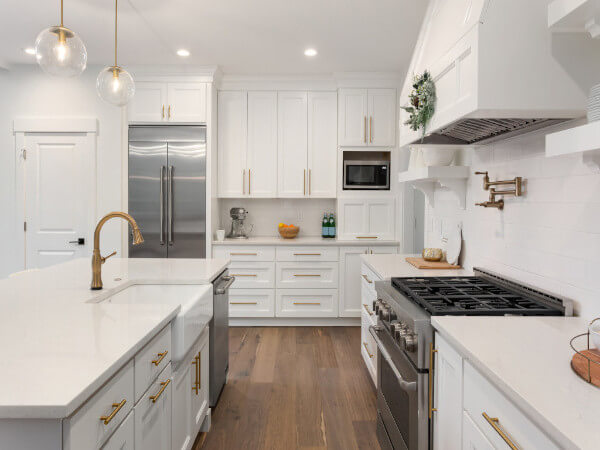
Jamie Gold, CKD, CAPS, MCCWC is an author, wellness design consultant and industry speaker. Her third book, Wellness by Design (Simon & Schuster), published September 2020. You can learn more about her Wellness Market presentations, books, Wellness Wednesdays Clubhouse conversations and consulting services at jamiegold.net.
The post Wrapping 2021 and Looking Ahead appeared first on Kitchen & Bath Design News.
Did you miss our previous article…
https://www.thekawaiikitchen.com/?p=685
Anticipation Builds for In-Person KBIS 2022
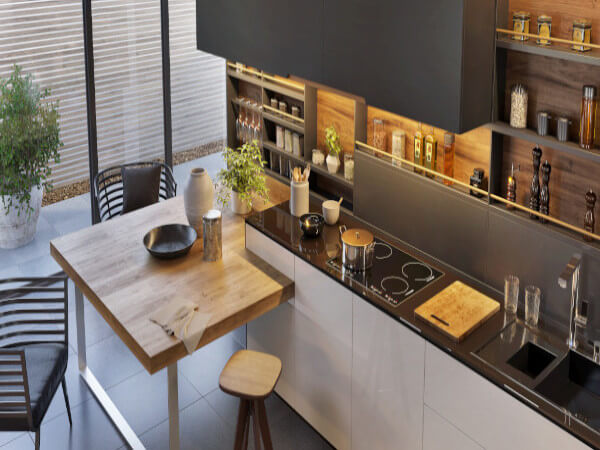
HACKETTSTOWN, NJ – As the year comes to a close, many in the kitchen and bath industry are looking ahead to the return of the Kitchen & Bath Industry, the largest North American event dedicated to this segment of the market. With safety protocols and procedures in place, professionals are celebrating a return to an in-person exhibit and educational forum, where they can learn, reconnect and recharge for a promising business future.
Once again scheduled to be part of Design & Construction Week with the International Builders Show, the Kitchen & Bath Industry Show is scheduled to be held February 8-10, 2022 at the Orange County Convention Center in Orlando, FL. KBIS and IBS, hosted by the National Kitchen & Bath Association and the National Association of Home Builders, respectively, are expected to feature over 800,000 net square feet of exhibit space and showcase more than 1,000 design and construction brands.
While the event is still several weeks away, Kitchen & Bath Design News is offering this sneak peek at just a few of the products that will be on display.
The post Anticipation Builds for In-Person KBIS 2022 appeared first on Kitchen & Bath Design News.
Did you miss our previous article…
https://www.thekawaiikitchen.com/?p=682
Battling the Supply Chain Woes
Qianyan Cheng has felt the sting of the industry’s historic supply chain disruptions.
The co-founder of INOX – the Sacramento-based supplier of decorative hardware and door locks – Cheng has reported lengthy shipment delays of international goods since the onset of COVID-19. Shipping costs, Cheng tells Kitchen & Bath Design News, have risen exponentially in the face of the public-health crisis. The growing backlog of cargo ships waiting to offload in key ports, she says, has increased more than fourfold in some cases, impacting distribution throughout the company’s worldwide network of upscale hardware showrooms. Related bottlenecks have delayed remodeling and new-construction projects for months – or postponed them entirely.
And Cheng, of course, is far from alone.
Indeed, supply chain disruptions wrought largely by the coronavirus continue to prove a major impediment across virtually all segments of the kitchen and bath industry, including dealers, design firms, manufacturers, importers and building/remodeling construction firms.
In some instances, the supply chain timeline has doubled or tripled due to increased demand coupled with port closures, worker shortages and travel restrictions, as well as vaccine and testing mandates for seafarers, truck drivers and other transport workers. Design firms are witnessing increasing lead times, raw material scarcities and double-digit price hikes for certain products. Labor rates have skyrocketed in the face of worker shortages. Cancellations and postponements have increased, with clients opting to put projects on hold until wait times and costs normalize. At the same time, a sizable number of manufacturers report ongoing capacity restraints, a scarcity of raw materials and the discontinuation of slow-moving product lines to alleviate production constraints.
Equally vexing is the likelihood that the current disruptions will linger well into 2022, and perhaps beyond, despite growing appeals for corrective action.
To wit, the Association of Home Appliance Manufacturers, the organization representing many of the industry’s leading appliance suppliers, last month lent its support to a coalition of trade associations urging government policymakers to address ongoing challenges that business leaders say are damaging the competitiveness of manufacturers, stalling America’s economic recovery and resulting in unprecedented damage to the global product supply chain. AHAM’s call for action, following a similar appeal by the National Association of Home Builders, came one day after a coalition of workers from across the supply chain warned that global trade is facing a potential system collapse if world leaders fail to restore freedom of movement to transport workers.
While some supply chain challenges – such as import tariffs – require long-term, systemic solutions, others can be mitigated by kitchen and bath dealers, designers and remodelers who are willing to temporarily alter their business approach.
For example, many design firms report that they’ve become adaptive to current supply chain challenges, ordering products months in advance to circumvent long lead times and lessen the sting of price hikes. Others say they’ve ordered materials as soon as project contracts are signed, even if a job is weeks out, or have stocked up on commonly used products in an effort to reduce delays. Still others are offering clients alternative products that are easier to obtain or already in stock. Frequent and candid communication regarding extended lead times, back orders and volatility in delivery dates has also become more critical than ever in managing client expectations and preserving relationships, dealers and designers say.
The kitchen and bath design trade has faced a multitude of challenges over the course of its existence. The advent of big box stores and e-commerce has altered the industry’s competitive set. Corporate bankruptcies, ownership changes, factory closures and divestitures have reshaped the manufacturing and retail landscape. Fast-changing lifestyles, homeowner demographics, product introductions and consumer hot buttons have exacerbated the need to stay abreast of what’s going on. Economic downturns have occasionally knocked the industry on its heels.
Astute dealers and designers, for decades, have proven resilient to these and other changes. They’ll doubtless discover ways to survive the current supply chain disruptions, as well. 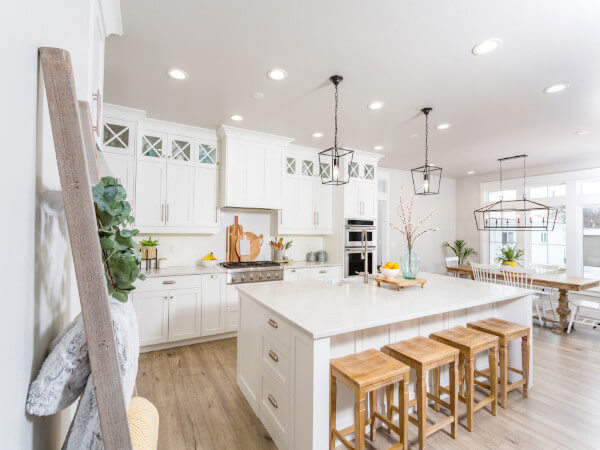
The post Battling the Supply Chain Woes appeared first on Kitchen & Bath Design News.
Did you miss our previous article…
https://www.thekawaiikitchen.com/?p=679
Examining the Origins of Creativity
Have you ever been asked, “Where did you get that idea?”
Have you ever wondered what creativity is, and where ideas come from? I have – all my adult life. While there are many answers, I think a great one is, “It’s a gift to be shared.”
What I’m talking about specifically here are unique solutions that solve problems, like storage needs and designing for function and safety. Combine these challenges with the homeowner’s desire for a unique appearance that fits their lifestyle, and the result? We have the makings of an award-winning kitchen or bathroom.
Design award applications usually require a summary of how we solved the project owner’s problems, and the recap makes before-and-after photos more relevant. If our entries offer original solutions, they deserve praise. The recognition boosts our confidence.
THE ORIGINS
Where does creativity originate? You’re taking a shower, and an idea flashes out of nowhere. You think to yourself, “What if I…?” You can’t wait to test the reality of your idea on your clients’ plans. From that idea comes another one, and another one. It’s like someone unlocked the vault of ingenious results for you. You’re motivated.
Albert Einstein said, “Creativity is intelligence having fun.” He had intimate knowledge of the universe, and he understood visionary imagination.
As kitchen-bath design specialists, we have a collection of skills and information acquired through our experience. Our intelligence allows us to apply the knowledge to solve problems. But, it’s more than that. Creativity frees our minds to absorb knowledge. It enables alternative ways of thinking.
How do you feel when you discover a spectacular new product at the Kitchen & Bath Industry Show, or in a Kitchen & Bath Design News article? There’s a tingle of excitement, and you can’t wait to solve homeowners’ problems with it. Creativity unblocks our old patterns of thinking. As a result, we’re more receptive to new ideas.
I’ve experienced good luck with product information that got tucked in the “future use file” of my mind. For example, I recommended a Duravit all-glass pedestal lavatory to a new client six months after I learned about it. She still loves it!
And I remember the drop-dead gorgeous Vetrazzo “Sky” countertop that wowed clients when I created a new laundry room for them – two years after discovering Vetrazzo for a blog. Then there was the joy I felt recently, saving a client over $3,000 by substituting bronze plumbing fittings I’d seen in an online newsletter last year.
These experiences are not uncommon for us.
Creativity is fun. We lose track of time when we’re engrossed in creating plans for a client or researching the right products that will make their hearts sing. Getting into a “zone” is like meditating. Experts agree that this helps us live longer. Somehow, we find a way to balance our desire to innovate and perform boring – but necessary – tasks.
Creative ideas are everywhere, always available to us when we need or want to improve our world. One way to explain it is finding a need and then creating a solution. Creativity helps draw out what is already there waiting to be used so that possibilities can emerge. Albert Einstein understood this concept and taught it passionately.
Early in my career, I had a client who wanted to store two sets of eating utensils in her small condominium kitchen with space for only five drawers. I designed a drawer within a drawer, instructing the cabinetmaker to lower the drawer back and then install full-extension glides backward on the top section so it slid back. About six months later, Rev-A-Shelf introduced the same solution for the mass market. So, I was solving an individual need at the same time that Rev-a-Shelf was solving a popular need.
BUILDING CONNECTIONS
Creativity builds intercultural and intergenerational connections.
This is shown by the worldwide acclaim of America’s architectural genius, Frank Lloyd Wright. He died in 1959, at 91. Yet his work still inspires architects and designers 62 years later. Wright was the first architect in history to use cantilevering in his famous Mill Run, Pennsylvania home. He designed “Fallingwater” for Edgar Kaufman in 1935. Evidence of his continuing popularity? Architects and designers are recreating Wright’s “Prairie-style” homes for today’s homeowners.
I love one of the stories about Wright – and there are thousands! He had very little income from his architecture practice for about 12 years (1922–1934). But he kept drawing plans and renderings for residences and public buildings. He also created graphic art for postcards. And he was a prolific writer. Hundreds of his articles appeared in House Beautiful and other popular magazines during that period. His self-promotion paid off. Clients began hiring him in 1934 after they recovered from the depression. He never looked back, proving that creativity is nurturing. Wright had more successful commissions in the last 30 years of his life than he had in the first 61 years!
Like Wright and other well-known innovators, today’s designers will impact future designers. They will inspire and motivate everyone to achieve their own success. We see this in our profession now. Many peers earn honors for their work because they are fearless in their creative expression. Their work will pass the test of time. They are not bound to what’s popular now because they are thinking ahead to the future. They have curiosity and open minds to play the “What if?” game. They often win.
But we see only the wins, not the losses. Creative people have a great habit of learning from every experience. They’re driven to improve themselves and everything around them.
I became aware of this when I taught Western design to Japanese interior design students in San Francisco and gave them a special assignment. They had to create a large master bathroom in a 17’x17′ area. Naturally, they were eager to learn and use the new skills they’d acquired. Not accustomed to large bathrooms, the students had fun uncorking their creativity.
There was one student, Izumi, who lit up the room with her enthusiastic ideas and questions. When it was time to review her plan one-on-one, she was trembling, afraid that I would criticize her work. Her plan wasn’t to scale. But her design was unique and it earned my praise for achieving something radically different. She designed a round bathroom with many windows surrounding a center closet! We joyfully worked together after class, figuring how to make her idea possible.
Like Izumi’s bathroom, I’ve come full circle – back to where I started, with the same question: What is creativity, and where does it come from? The conclusion: Creativity, like love, is an unlimited feeling, indefinable.
No, creativity is love. 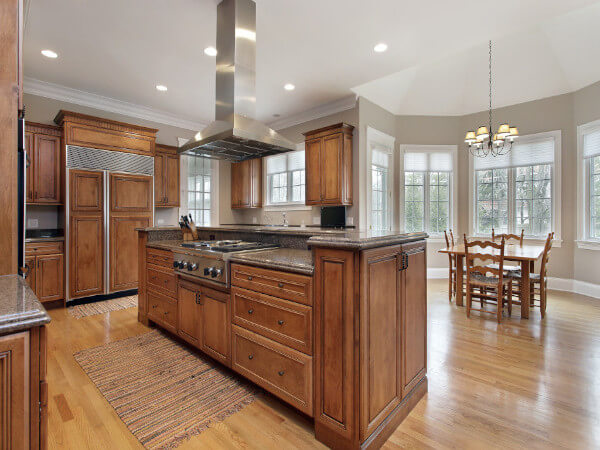
Diane Plesset, CMKBD, CAPS, NCIDQ is the principal of D.P. Design in Oregon City, OR and has over 35 years of experience as a kitchen and bath designer. She is the author of the award-winning book, THE Survival Guide: Home Remodeling, and has been the recipient of numerous design awards. Named a 2019 KBDN Innovator, Plesset has taught Western design to students of the Machida Academy in Japan and has a podcast, “Today’s Home.”
The post Examining the Origins of Creativity appeared first on Kitchen & Bath Design News.
Did you miss our previous article…
https://www.thekawaiikitchen.com/?p=676
Sustainability Has Cross-Market Impact
INDIANAPOLIS, IN — A trio of emerging trends in neighborhood design and sustainable living practices should continue to shape the market for new housing and residential remodeling as the “mindset of consumers continues to shift in a dynamic social climate,” according to a new report from the Home Improvement Research Institute (HIRI).
According to HIRI’s recently issued Future of Housing Trend Report, new and remodeled homes will likely be shaped by a “growing homeowner passion” regarding issues such as climate change, sustainability and minimalism –
resulting “in an increased emergence of eco-friendly materials and 3D-printed technology to designs focused on cultural inspiration and reversible architecture.”
Among the key trends identified by HIRI researchers are the following:
Sustainable Housing: With sustainability a top priority, residential architects and designers are embracing different eco-friendly concepts, among them “reversible design” (the architecture of structures that can be easily deconstructed and can be reused or with parts that can be removed and added easily). Also growing as a trend in new construction is 3D-printed housing – homes that offer sustainable and protective construction that avoids structural issues in the case of extreme weather, according to HIRI.
“Contemporary consumers are wary of the impending consequences of climate change, and a large number are becoming increasingly aware that simply shifting their lifestyle and practicing ecological mindfulness are likely not enough,” the Indianapolis, IN-based HIRI said. “As a result, many are demanding that brands and creators take the environment into consideration.”
Simplified Living: Building off of the desire for more sustainable living, the emergence of simple, more minimalist design emphasizes homeowners’ functions and needs, according to HIRI.
“Contemporary consumers in fast-paced urban centers are looking to balance the demands of their daily lifestyle with a comfortable home environment,” HIRI observed. “Many are prioritizing minimalist designs and additional spaces that can optimize and elevate their living situation without compromising aesthetic appeal.”
Flight from the cities: “As urban centers expand in size and population, consumers are recognizing that their quality of life is suffering – whether that be due to alienation, affordability issues, lengthy commutes or pollution,” HIRI said. As a result, many are moving away from city centers and turning to community-based neighborhoods that provide a sense of belonging while also satisfying the need for convenience and cleaner air.
“Hyper-local neighborhoods”: Architects, developers and local governments are proposing neighborhoods that are centered on community building and local businesses, according to HIRI. These neighborhoods are intended to be car-free, with all necessities reachable via a short walk or bicycle ride. 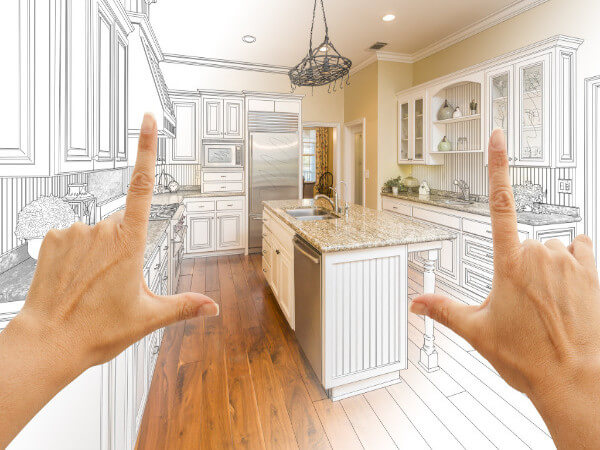
The post Sustainability Has Cross-Market Impact appeared first on Kitchen & Bath Design News.
KBIS Returns to Orlando
ORLANDO, FL — Returning to an in-person format, the Kitchen & Bath Industry Show is scheduled to be held February 8-10, 2022 at the Orange County Convention Center in Orlando, FL. Part of Design and Construction Week, KBIS will once again be co-located with the International Builders’ Show.
KBIS and IBS, hosted by the National Kitchen & Bath Association and the National Association of Home Builders, respectively, are expected to feature over 800,000 net square feet of exhibit space and showcase more than 1,000 design and construction brands.
SHOW HIGHLIGHTS
The combined KBIS and IBS events will offer diverse programming, both on and off the show floor, along with a range of new products, technology, demonstrations and networking opportunities.
Some of this year’s highlights include:
- The Kitchen & Bath Design + Industry Awards/Opening Party, dubbed “Night of Elegance,” is scheduled for Monday, Feb. 7 from 6:30 p.m. to 11 p.m. at the Rosen Centre.
- DCW’s Opening Ceremonies, which will take place from 8 a.m. to 9 a.m. on Tuesday, Feb. 8, will feature keynote speaker Earvin “Magic” Johnson.
- Wednesday, Feb. 9 opens with the NKBA State of the Association, scheduled for 8:30 a.m. to 10:15 a.m. The presentation will be followed with the State of the Industry keynote address by Ginny Clarke, Holistic Leadership Strategist and Former Director of Executive Recruiting at Google.
- The second day of KBIS closes with The Bash at Mango’s Tropical Cafe, from 8:30 p.m. to 1:30 a.m., hosted by the NKBA.
EDUCATION & ACTIVITIES
The much-sought-out Voices from the Industry Conference will once again provide educational sessions and workshops, many offering continuing education units (CEUs). Over 80 hour-long informational sessions will offer attendees the chance to hear presentations from industry peers aligned to one of six tracks: Grow Your Business, Kitchen & Bath Specialty Training, Design, Management, Building/Remodeling and Customer Service. Several of the presentations will be hybrid, meaning the sessions can also be accessed online.
Education and information will also be provided through a variety of channels at the show, including:
KBISNeXT Stage, which will showcase the industry’s latest trends and insights shared by leading kitchen and bath experts. Programming includes DesignBites and a series of panel discussions on hot industry topics.
Wellness Pavilion, an area that showcases new and exciting wellness products and education covering themes such as biophilia, technology, lighting and more.
Discovery District, a portion of the South Hall devoted to emerging and international brands. At its center is the Discovery District Lounge, a place to sit, relax, recharge and network.
DCW Outdoor Living Pavilion, South Hall’s segment devoted to new products for grilling, entertaining and living well in a home’s outdoor space.
The ICFF Pavilion brings together brands that feature authentic design, contemporary design and high-end manufacturing. The area is focused on kitchen- and bath-
specific brands including fixtures, hardware, basins, tubs and vanities, as well as furniture, seating, flooring, lighting, materials and accessories.
NKBA Global Connect has an ongoing mission to expand KBIS and NKBA’s international impact, and it will offer curated International Delegation tours, an inaugural Pavilion in South Hall and the launch of the official German Pavilion at KBIS.
Design Milk X Modenus Talks Lounge, a collaboration between Design Milk and Modenus Media, is returning to KBIS for a fifth year and will be located in South Hall near the ICFF Pavilion. For 2022, #dmmtalks will focus on presentations and conversations around design business, emerging designers and artisans as well as networking breakfasts, luncheons and cocktail hours.
DesignBites “speed dating for brands” program returns, showcasing the latest product innovations. Situated on the KBISNeXT Stage, the presentation gives exhibitors the opportunity to share their newest products and programs in a three-minute presentation. 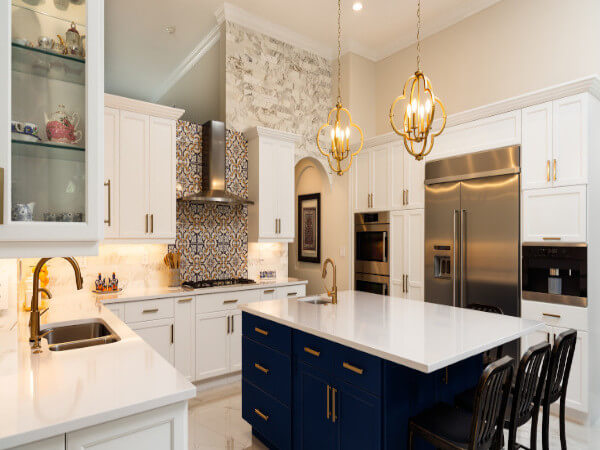
The post KBIS Returns to Orlando appeared first on Kitchen & Bath Design News.
Did you miss our previous article…
https://www.thekawaiikitchen.com/?p=666
Elegant Essentials
Beautiful finishes, exquisite detailing and exceptional functionality are all integral to the design of luxury products. The high standards for these products are not only constantly met but exceeded by the companies that produce them.
Choosing the best products introduced into the luxury market is no easy task, but the Decorative Plumbing & Hardware Association assigned a team of industry experts to do just that for its 2021 Product of the Year Awards. The program recognizes uniqueness, design, functionality, innovation and technological superiority and taps the winners in a range of categories. This year’s independent panel of judges included: Mary Jo Peterson, principal, Mary Jo Peterson Design in Brookfield, CT; Eliot Sefrin, founding director and publisher emeritus of Kitchen & Bath Design News; Alissa Ponchione, executive editor at Hospitality Design magazine; Molly Switzer, creator, Molly N. Switzer Designs in Portland, OR, and Alena Capra, owner, Alena Capra Designs in Fort Lauderdale, FL.
Award winners were presented in seven separate categories: Plumbing Fixture, Water Delivery, Furniture, Accessory, Door Hardware, Cabinet Hardware and Technology. The Products of the Year were announced at DPHA’s annual conference and product showcase held this past fall. 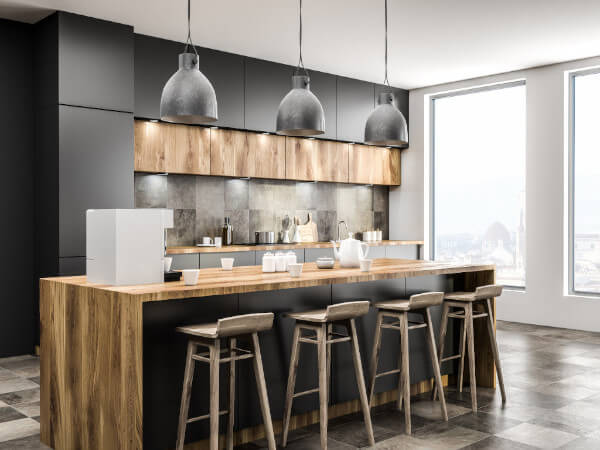
Water Delivery
Winner
Brizo: Frank Lloyd Wright Single-Function Raincan Showerhead
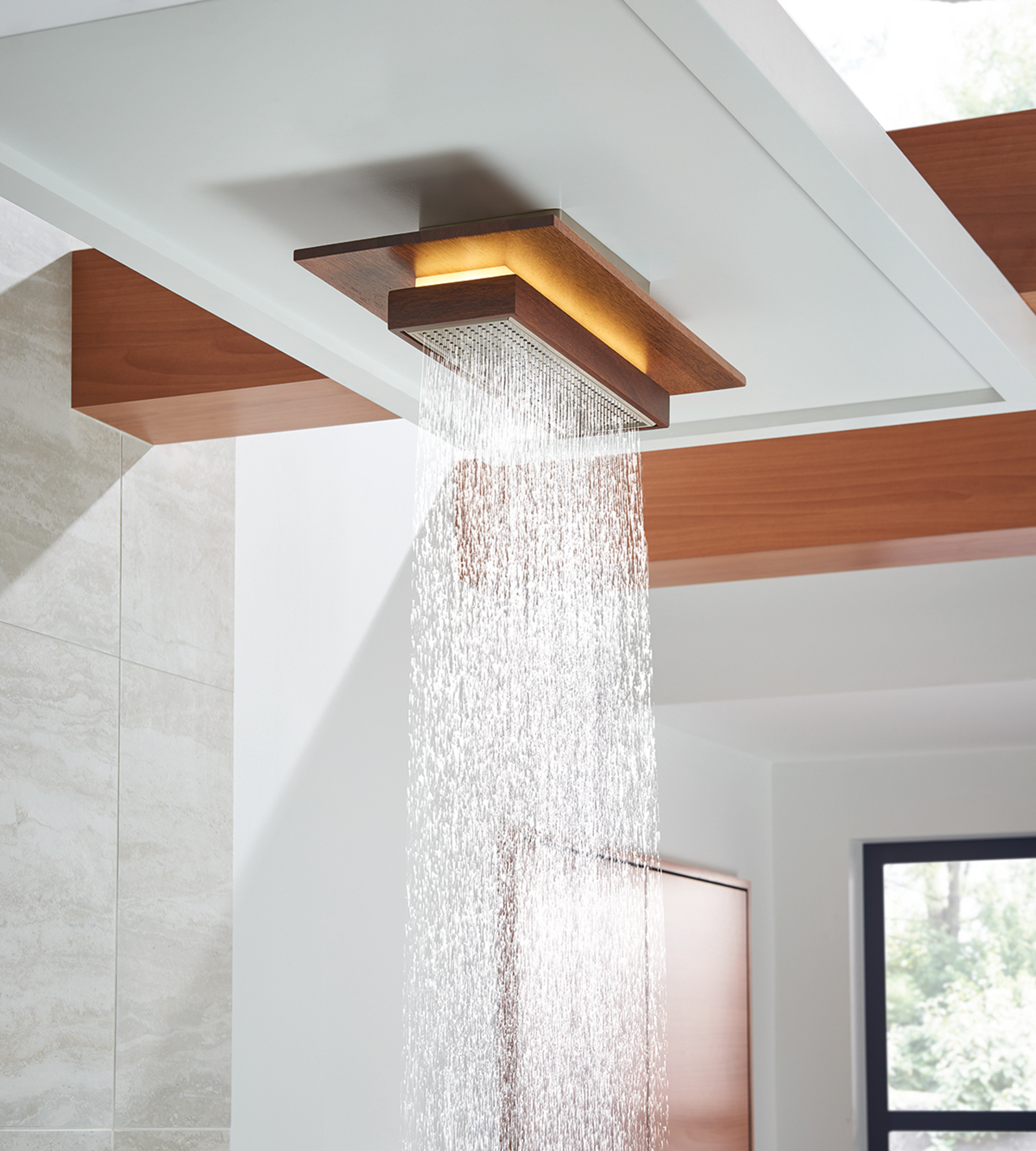 Drawing on the famed architect’s philosophy of organic architecture, Brizo’s Frank Lloyd Wright Single-Function Raincan Showerhead features the distinctive rush of the Canopy Spray, which activates a built-in LED light powered by a hydroge- nator for a dramatic effect. The Spray releases thousands of fine droplets, creating a down- pour that leaves a light tingling sensation. The showerhead can also be surface mounted to the ceiling or pendant mounted on a shower arm. A number of metal finish options highlight the natural beauty of the available wood.
Drawing on the famed architect’s philosophy of organic architecture, Brizo’s Frank Lloyd Wright Single-Function Raincan Showerhead features the distinctive rush of the Canopy Spray, which activates a built-in LED light powered by a hydroge- nator for a dramatic effect. The Spray releases thousands of fine droplets, creating a down- pour that leaves a light tingling sensation. The showerhead can also be surface mounted to the ceiling or pendant mounted on a shower arm. A number of metal finish options highlight the natural beauty of the available wood.
Honorable Mention
California Faucet: Corsano Culinary with Squeeze Handle
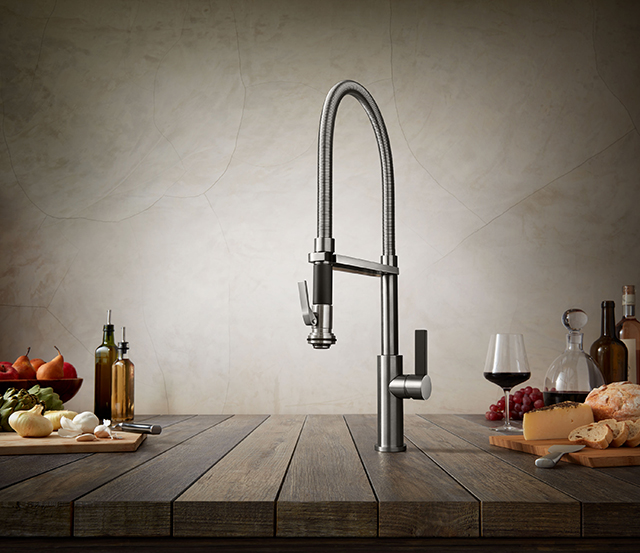 Designed to give cooking enthusiasts a professional look, the Corsano Culinary Faucet with Squeeze Handle includes an easy-to-squeeze lever that activates a powerful spray. Available from California Faucets, the kitchen faucet is offered in 25-plus artisan finishes, plus the ability to finish the coiled spring to match the rest of the faucet. The uniquely engineered insulated sprayhead ensures that it’s never too hot to the touch, even with scalding water. Easy-to-clean spray jets withstand mineral build-up, notes the firm.
Designed to give cooking enthusiasts a professional look, the Corsano Culinary Faucet with Squeeze Handle includes an easy-to-squeeze lever that activates a powerful spray. Available from California Faucets, the kitchen faucet is offered in 25-plus artisan finishes, plus the ability to finish the coiled spring to match the rest of the faucet. The uniquely engineered insulated sprayhead ensures that it’s never too hot to the touch, even with scalding water. Easy-to-clean spray jets withstand mineral build-up, notes the firm.
Accessory
Winner
Sterlingham: Marble Heated Towel Rail
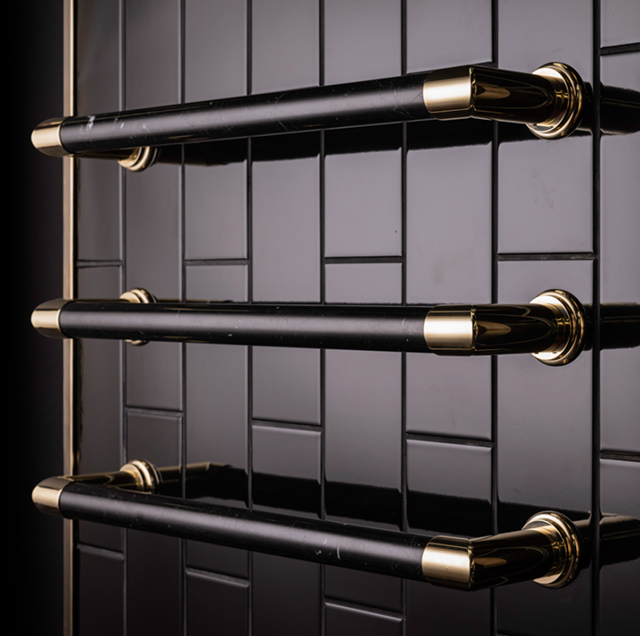 The Sterlingham Co.’s Marble Heated Towel Rail pairs marble with the brand’s signature brassware in a rail designed to gently warm towels. Part of the Cascades Collection, the single rails – which measure nearly 24″ long – may be hung alone or stacked and arranged in nearly any formation. The marble accents are patterned and versatile, and available in five distinctive marbles: Nero Marquina, Bardiglio Nuvolato, Bianco Carrara Venatino, Calacatta Gold Calo-Bett and Giallo Sienna, along with 16 metal finishes.
The Sterlingham Co.’s Marble Heated Towel Rail pairs marble with the brand’s signature brassware in a rail designed to gently warm towels. Part of the Cascades Collection, the single rails – which measure nearly 24″ long – may be hung alone or stacked and arranged in nearly any formation. The marble accents are patterned and versatile, and available in five distinctive marbles: Nero Marquina, Bardiglio Nuvolato, Bianco Carrara Venatino, Calacatta Gold Calo-Bett and Giallo Sienna, along with 16 metal finishes.
Honorable Mention
Infinity Drain: Next Day Custom Linear Program
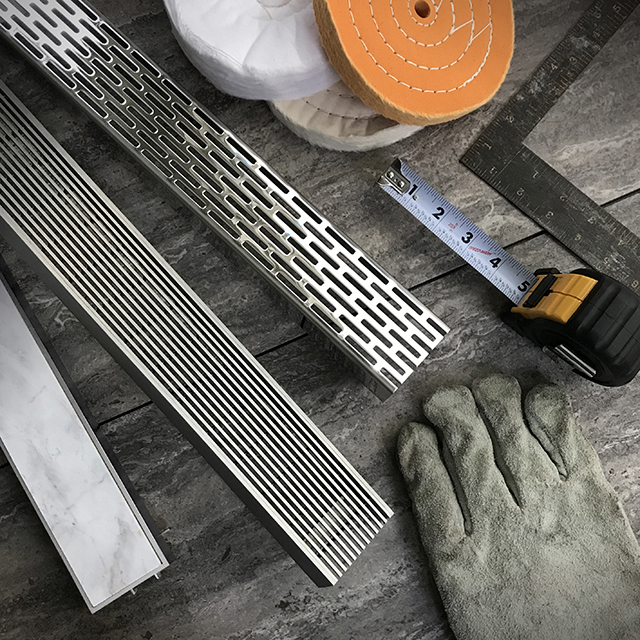 Infinity Drain’s Next Day Custom program eliminates costly and lengthy installation delays by offering custom-sized drains for the shower within a day. Next Day Custom Linear Drains are available in lengths up to 72″ and are offered in two finishes, three grate styles and for all installation waterproofing methods. Custom orders received by 10 a.m. ET ship the following day.
Infinity Drain’s Next Day Custom program eliminates costly and lengthy installation delays by offering custom-sized drains for the shower within a day. Next Day Custom Linear Drains are available in lengths up to 72″ and are offered in two finishes, three grate styles and for all installation waterproofing methods. Custom orders received by 10 a.m. ET ship the following day.
Plumbing Fixture
Winner
MTI Bath: Bowie Freestanding Tub
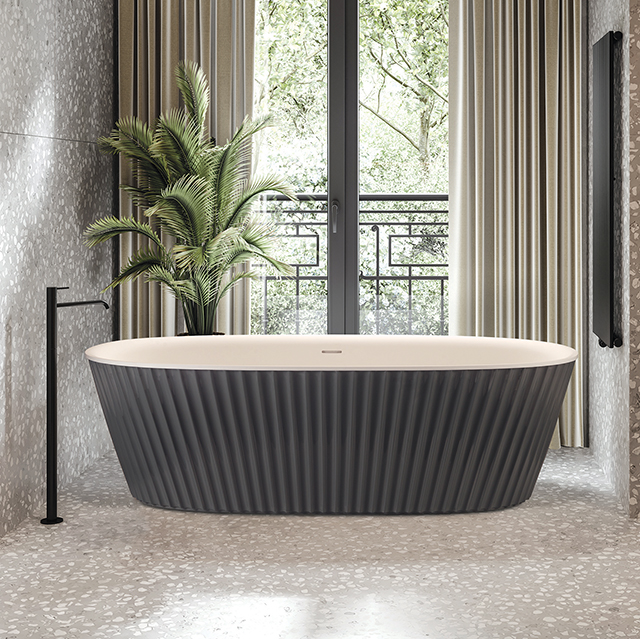
Featuring pleated exterior detailing, MTI Bath’s Bowie Freestanding Tub adds unexpected texture to the bath. Developed in collaboration with the design firm Source, Bowie is handcrafted from MTI’s SculptureStone material, which is primarily an organic mixture of ground natural minerals and resins that presents the look and feel of molded stone. Bowie provides space for two bathers, is offered as a soaker or air bath and is available in white or biscuit with eight different exterior colors in matte or highly polished gloss finishes.
Honorable Mention
Native Trails: Amara Fireclay Sinks
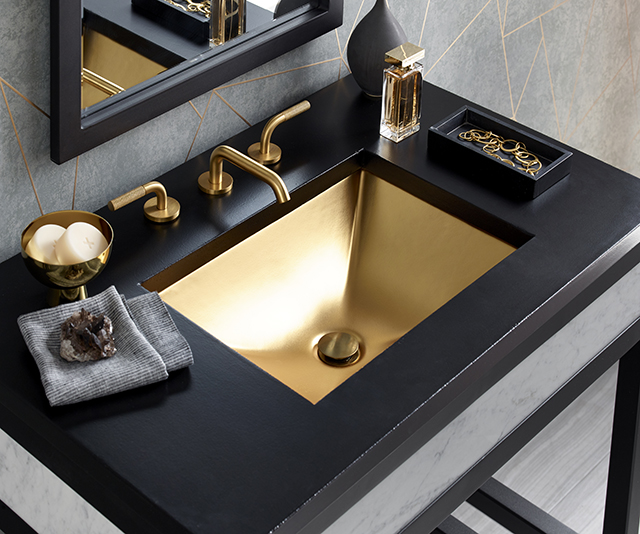 Handcrafted by Italian artisans, Amara fireclay sinks from Native Trails feature a rectangular profile glazed in 24k gold, platinum and silver in honor of the company’s silver anniversary. The sink is created from rich clay soils sourced from the Umbrian region of central Italy that are molded using ancient ceramic techniques dating back to the Bronze age. The sinks can be installed as drop-in or undermount, and deliver a stain-resistant, non-toxic coating that resists tarnishing and fingerprints.
Handcrafted by Italian artisans, Amara fireclay sinks from Native Trails feature a rectangular profile glazed in 24k gold, platinum and silver in honor of the company’s silver anniversary. The sink is created from rich clay soils sourced from the Umbrian region of central Italy that are molded using ancient ceramic techniques dating back to the Bronze age. The sinks can be installed as drop-in or undermount, and deliver a stain-resistant, non-toxic coating that resists tarnishing and fingerprints.
Furniture
Winner
Stone Forest: Elemental Crossbar
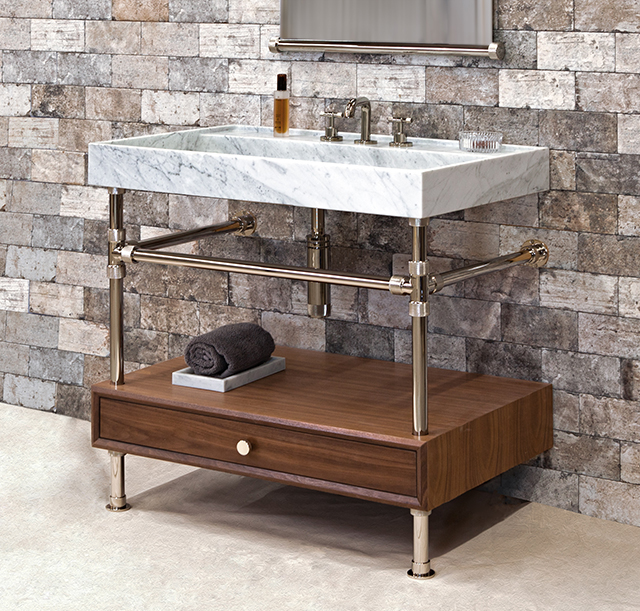 Designed for the bath, Stone Forest’s Elemental Crossbar uses a locking collar system that affords the flexibility to customize each setup to suit individual needs and preferences. The knurled locking collar supports modular components at desired heights on the brass pipe legs for seemingly endless options. Elemental Crossbar allows users to combine integral stone sinks, wood drawers and steel, wood or stone shelving in various combinations. It is available in all finishes, including a new walnut finish option for drawers and shelves.
Designed for the bath, Stone Forest’s Elemental Crossbar uses a locking collar system that affords the flexibility to customize each setup to suit individual needs and preferences. The knurled locking collar supports modular components at desired heights on the brass pipe legs for seemingly endless options. Elemental Crossbar allows users to combine integral stone sinks, wood drawers and steel, wood or stone shelving in various combinations. It is available in all finishes, including a new walnut finish option for drawers and shelves.
Honorable Mention
AD Waters/Simas: Agile Vanity
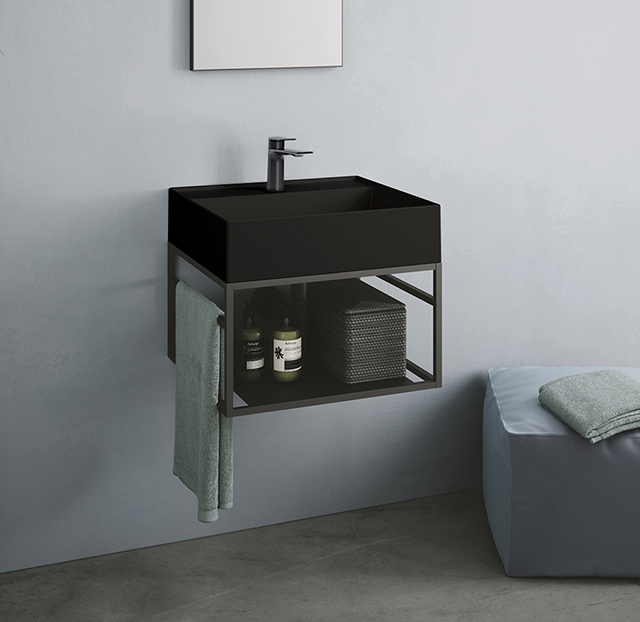 Handcrafted in Italy, the Agile wall-hung console vanity from Simas exhibits clean lines and squared-off edges that evoke both simplicity and purity. Available in the U.S. from AD Waters, the piece includes a washbasin fashioned from Italian porcelain, showcasing craftsmanship and cultural authenticity. Agile is available in eight colors.
Handcrafted in Italy, the Agile wall-hung console vanity from Simas exhibits clean lines and squared-off edges that evoke both simplicity and purity. Available in the U.S. from AD Waters, the piece includes a washbasin fashioned from Italian porcelain, showcasing craftsmanship and cultural authenticity. Agile is available in eight colors.
Door Hardware
Winner
Accurate Lock & Hardware: SmartEntry, Self-Latching Mortise Lock
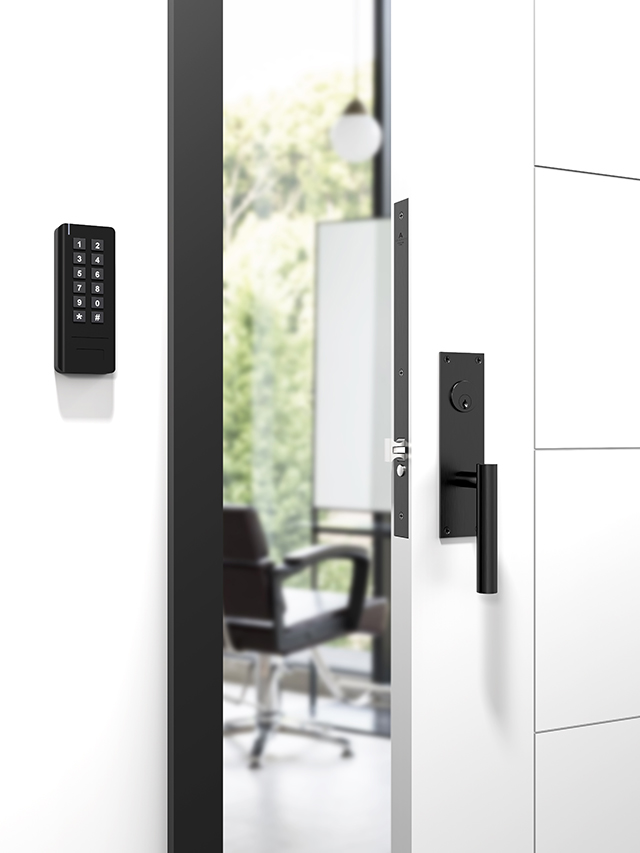 The SL-SM9159E brings the convenience of smartphone locking control to space-saving sliding and pocket doors. The lock, from Accurate Lock & Hardware, combines mechanical expertise with cutting-edge technology. Paired with the SL9100 Self-Latching Mortise Lock, it is available with a variety of trim options including Sectional Trim (lever and rose), ADA Trim (lever and escutcheon) or Flush Pull Trim for Pocket Doors.
The SL-SM9159E brings the convenience of smartphone locking control to space-saving sliding and pocket doors. The lock, from Accurate Lock & Hardware, combines mechanical expertise with cutting-edge technology. Paired with the SL9100 Self-Latching Mortise Lock, it is available with a variety of trim options including Sectional Trim (lever and rose), ADA Trim (lever and escutcheon) or Flush Pull Trim for Pocket Doors.
Honorable Mention
OMNIA Industries: L.D12943 Smart Lock
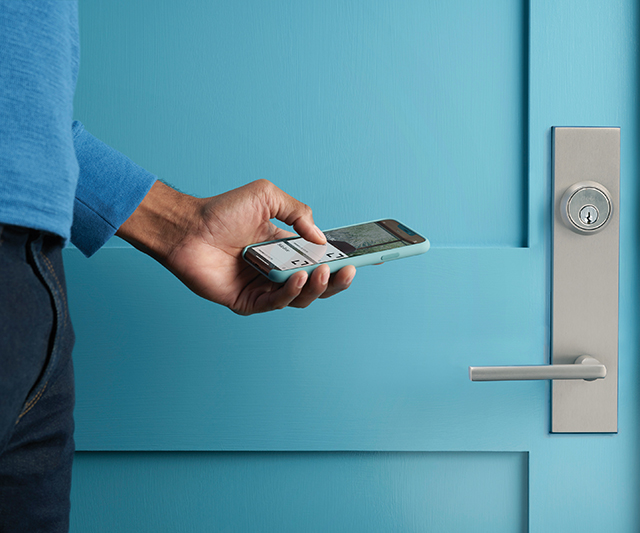 OMNIA Industries has partnered with Level to deliver smart deadbolt locksets, including the L.D12943 Smart Lock. The hardware designs are crafted in the Italian tradition and powered by the Level Bolt invisible smart lock. Level Bolt is powered by one CR2 lithium battery and works with the Level app to provide safe and secure keyless entry. Users can automatically lock and unlock a door, see who’s come and gone, access from anywhere, use with other devices, control with voice, create home automations and more.
OMNIA Industries has partnered with Level to deliver smart deadbolt locksets, including the L.D12943 Smart Lock. The hardware designs are crafted in the Italian tradition and powered by the Level Bolt invisible smart lock. Level Bolt is powered by one CR2 lithium battery and works with the Level app to provide safe and secure keyless entry. Users can automatically lock and unlock a door, see who’s come and gone, access from anywhere, use with other devices, control with voice, create home automations and more.
Technology
Winner
Airmada: Shower Drying System
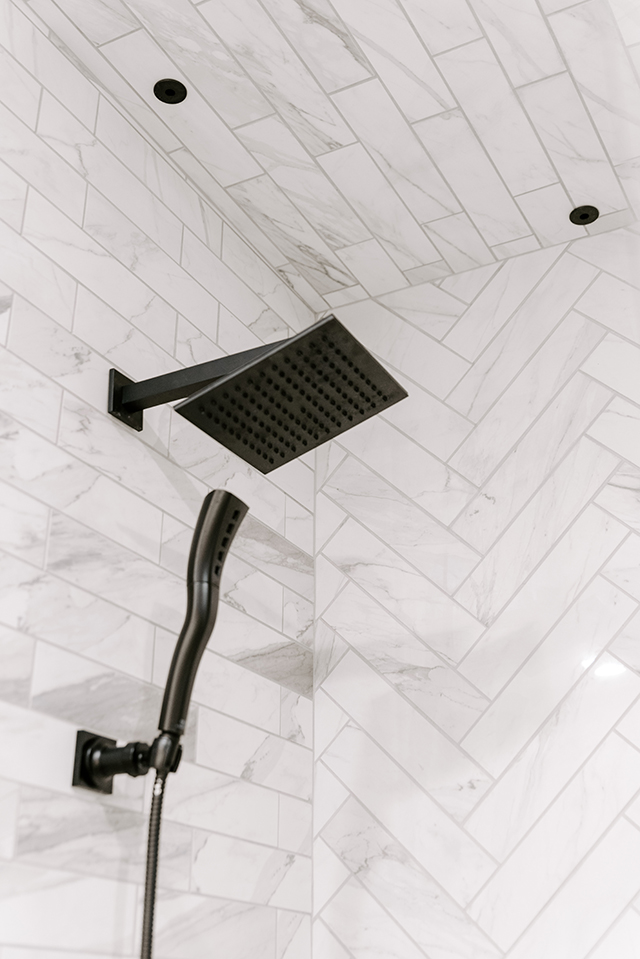 The patented Airmada Shower Drying System prevents mold, mildew, slippery floors and after-shower humidity, reduces watermarks, and the need to use harsh cleaning chemicals, notes the company. With the push of a button, air flows into the space from Air-Jet nozzles installed into the walls and ceiling. Installed at rough in, nozzles are placed throughout the shower space, typically in the ceiling, on the wall above any benches and low on walls to dry across the floor. An array of finishes to match tile, and complement other features, is offered.
The patented Airmada Shower Drying System prevents mold, mildew, slippery floors and after-shower humidity, reduces watermarks, and the need to use harsh cleaning chemicals, notes the company. With the push of a button, air flows into the space from Air-Jet nozzles installed into the walls and ceiling. Installed at rough in, nozzles are placed throughout the shower space, typically in the ceiling, on the wall above any benches and low on walls to dry across the floor. An array of finishes to match tile, and complement other features, is offered.
Honorable Mention
ThermaSol: HydroVive
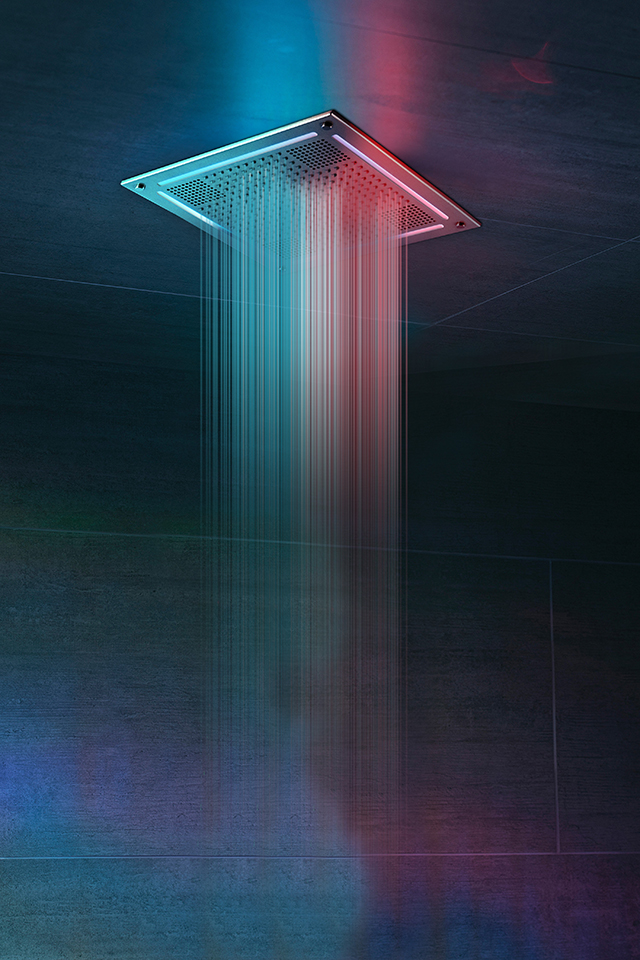
ThermaSol’s HydroVive is designed to bring the multi-sensory powers of light, sound and water under the user’s control when paired with ThermaSol’s Smart Shower Valve and ThermaTouch interface. Key features include a ceiling-mounted light, sound and rainhead environment system in one module; a rainhead shower that delivers a gentle falling water sensation with 300 neoprene jets; sound settings that include volume, treble, mid-range and bass; stereo RCA input; 200 full-color spectrum luminous LED, and built-in Bluetooth.
Cabinet Hardware
Winner
Waterstone Faucets: Industrial Appliance Pulls
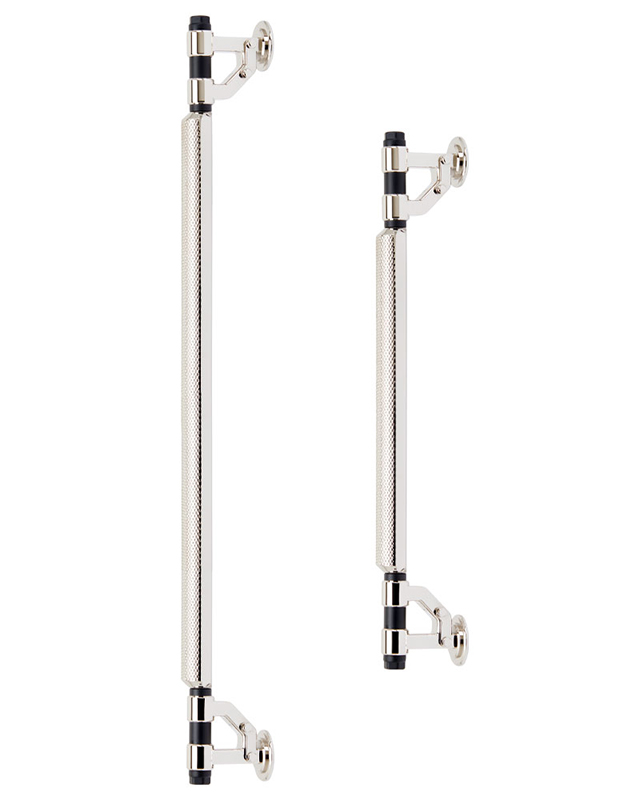 Inspired by the company’s Industrial Contemporary bath collection, the Industrial Appliance Pulls and cabinet hardware from Waterstone Faucets feature diamond knurling detailing. Fashioned from U.S. solid brass bar stock, the hardware features more of an oval shape for a comfortable feel in the hand. There is no knurling on the underside, which adds to the smooth aesthetic. Split finish designs are available.
Inspired by the company’s Industrial Contemporary bath collection, the Industrial Appliance Pulls and cabinet hardware from Waterstone Faucets feature diamond knurling detailing. Fashioned from U.S. solid brass bar stock, the hardware features more of an oval shape for a comfortable feel in the hand. There is no knurling on the underside, which adds to the smooth aesthetic. Split finish designs are available.
Honorable Mention
Turnstyle Designs: Hickory
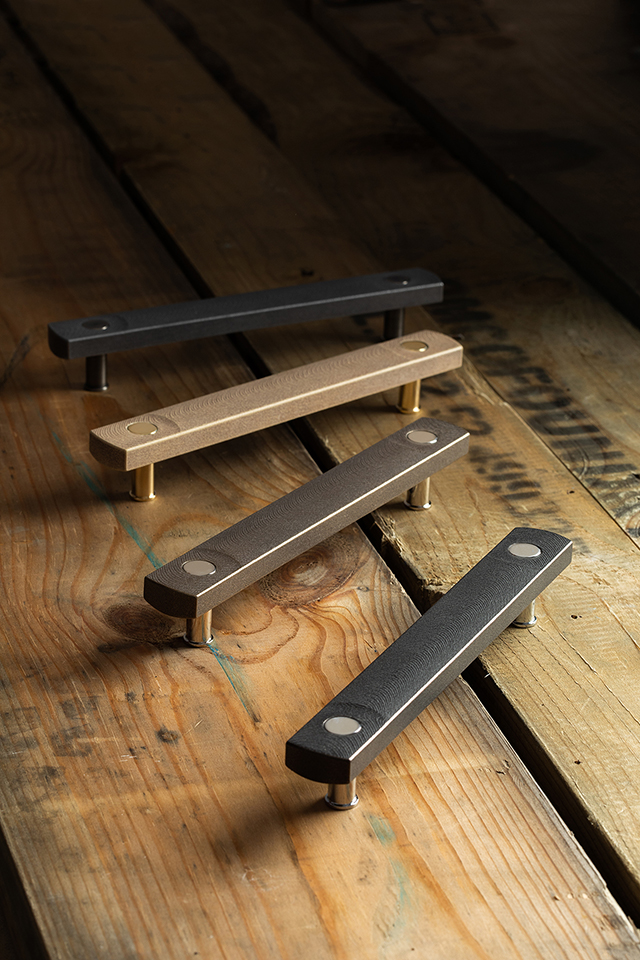 Inspired by North American hunting knives, the Hickory lever, pull handle and cabinet knob are hand-cast in Turnstyle Designs’ Amalfine material, which preserves the fine details of the timber and wood grain design. Available in 48 combinations of Amalfine and solid brass, the pieces are set on a solid brass plate or strip and have a circular button. The circular buttons are a take on a nail, creating a contrast between the smooth brass finish and the textured Amalfine surface.
Inspired by North American hunting knives, the Hickory lever, pull handle and cabinet knob are hand-cast in Turnstyle Designs’ Amalfine material, which preserves the fine details of the timber and wood grain design. Available in 48 combinations of Amalfine and solid brass, the pieces are set on a solid brass plate or strip and have a circular button. The circular buttons are a take on a nail, creating a contrast between the smooth brass finish and the textured Amalfine surface.
The post Elegant Essentials appeared first on Kitchen & Bath Design News.
Did you miss our previous article…
https://www.thekawaiikitchen.com/?p=649
Natural Warmth
The kitchen is the command center of many homes, with countertops called upon to handle more and more tasks. Food preparation is just the start; surfaces in the kitchen are also used for work, school, pet care and much more. These myriad uses require countertops that are strong and easy to care for. And, because they are so prominent in the kitchen, these surfaces must also look great and complement the other elements in the space.
“Consumers want products that are easy to maintain, durable and able to sustain a very active lifestyle,” says Massimo Ballucchi, v.p. kitchen and bath business at Cosentino North America, based in Coral Gables, FL. Customers are upgrading their countertops for aesthetic reasons as well, he says. “They want products that are making their homes a showcase…products they can admire for a long time.”
Colors and finishes for surfaces vary greatly based on individual style and taste, but there’s a clear move towards incorporating natural elements. “Designs and materials that are inspired by nature continue to lead the way in home decor trends,” stresses Gwen Petter, director of design for Temple, TX-based Wilsonart. “We’re seeing it everywhere from décor and paint colors to textiles and building materials, including countertops. Research shows that nature can offer mental health benefits including decreasing stress and relieving anxiety, as well as improve happiness and well-being.”
Material choice is often driven by convenient maintenance. “With a wave of new home buyers, we’re still seeing many homeowners unaware of the varying levels of durability and maintenance required when it comes to their countertop choices, and they’re shocked when they realize the maintenance involved with many popular options, such as marble,” offers Gerri Chmiel, residential design lead at Formica Corporation in Cincinnati, OH. “Interior designers say homeowners most often ask for the look of marble or quartz, but also want durable surfaces that are easy to clean and maintain,” she adds.
This is leading designers to recommend products that are low maintenance yet don’t compromise on modern, beautiful design. Colors that add warmth to the space – along with bolder colors, textures and materials that help make a statement – are also currently trending. That’s according to manufacturers recently surveyed by Kitchen & Bath Design News.
Natural Look Without the Wear
An organic, natural feel is desirable, but that doesn’t mean consumers are necessarily choosing natural stone. Maintenance concerns are driving the need for products that have the look of natural stone while offering higher durability. This has created a shift towards quartz, porcelain, laminate and solid surface.
“Consumers are most interested in performance, in-style yet timeless looks and materials that offer solutions,” Petter remarks. “The serene beauty of quartz is always in high demand, and it’s no surprise when you consider the material’s many benefits: on-trend elegant designs for any space, easy to clean and maintain, durable, stain resistant.”
“Solid Surface is quickly gaining traction as one of the most sought-
after countertops for its reliable durability, impact resistance and nearly effortless maintenance,” she adds.
The tendency of natural stone to stain and etch has driven the market towards porcelain, which offers the look, feel and depth of natural stone without the maintenance concerns, says Michael Zeitlin, executive director of Raphael Porcelain in Lodi, NJ. “Zero maintenance is something that every homeowner dreams of having when going for that look,” he states.
Maggie Ellis, residential marketing leader at Corian Design, based in Wilmington, DE, says they see users gravitating towards stone-like aesthetics as well as industrial looks such as cements and ironstone. “It really depends on the consumer, how they use their space and their personal style. In general, natural patterns are in demand,” she reports.
Practical Matters
Kitchen surfaces need to stand up to a wide range of activities, especially with the overlap between home, school and work these days. Durability, easy maintenance and cleanliness concerns have had a great impact on countertop trends, manufacturers say.
“Worry-free is a prerequisite to any surfacing in today’s world – whether it be flooring or countertop. That demand is here to stay,” stresses Sam Kim, senior v.p. – product at MSI in Orange, CA.
“Materials in homes need to be durable, to withstand the increased wear and tear and more frequent cleaning,” notes Ellis. Because outdoor spaces are being used more often, she adds, materials such as high-performance porcelain that can stand up to UV rays and the elements are in demand.
“We’ve seen a remarkable shift in consumer priorities to include a new focus on cleanliness and therefore countertop surfaces that can stand up to this new cleaning routine the world has taken on,” Petter states. “Materials that offer antimicrobial protection and stand up to rigorous cleaning are in high demand as we continue into this new normal.”
“Quartz, in general, has always been a durable and low-maintenance option for countertops,” adds Ed Rogers, executive v.p., US Surfaces, for Austin, TX-based Vadara Quartz Surfaces. “We are always looking for ways to improve our materials, and I believe consumers now are becoming more educated before they ever leave the house as to the type of product they want and how they need to take care of it.”
Bernadette White, v.p. at Cancos Tile + Stone in Southampton, NY says that, along with durability, the fact that porcelain comes in multiple thicknesses – allowing for a backsplash in a thinner material and thicker countertop while still book matching veining patterns – makes it a popular choice.
Warming Up
Manufacturers note that white is still the most prominent color for kitchen countertops, but warmer tones with texture and character, rather than stark, bright whites, are on the rise.
“Homeowners are looking for simple, grounding spaces that bring a sense of calm, so we’re seeing light, white spaces continue to dominate,” observes Chmiel. “People are comforted by what’s familiar, yet they’re craving something fresh and don’t want white to feel too stark, so we’re seeing an infusion of color into traditional palettes with an added hint of texture and drama.”
Ballucchi says the most sought-after trend right now is a white countertop with veining. “It showcases a clean look and the veins bring us back to a connection with nature and the everlasting richness of marble,” he explains.
The kitchen countertop is still dominated by white marble colors, concurs Taewoo Kim, surface product design director at LX Hausys America, in Atlanta, GA. “With a white base tone, gray, gold, navy and green vein colors that go well with the cabinet color are predominant,” he adds.
“While we see warm tones increasing in demand, the majority of the market is still demanding a lighter/white design aesthetic,” offers Jason Brown, director of Product Management for Architectural Surfaces, based in Austin, TX. He says veined marble porcelains, especially those emulating natural marble patterns, are seeing a surge.
Sam Kim remarks, “Warmer tones of both background and vein colors are gaining popularity, as are alternative finishes, such as MSI’s concrete- finish in quartz, which features the feel of concrete without any of the maintenance, staining, fingerprints, etc.”
Ballucchi adds that there’s a trend toward soft grays with beige undertones, sometimes known as “greige.” These colors add a contemporary feel, he notes, but can also go well with traditional cabinetry. Adding the beige to colder gray warms it up, bringing a more organic feel, he adds.
Bold Colors and Textured Looks
Homeowners seeking to make a statement are often moving towards darker or more vibrant colors, often mixed with other materials to add contrast, manufacturers say.
“Consumers are more open to adding color to their countertops,” Ballucchi notes. “Just as blues and greens are getting stronger in cabinetry, equally saturated, solid hues are also being sought out in countertops, as seen in Silestone’s newly-launched Sunlit Days Collection.”
Brown agrees that colors are currently in demand. “We’ve also seen an increase in bold and vibrant colors in residential settings for countertop designs – bold bathrooms, for example. People like a statement piece. We’re also seeing statement pieces on the kitchen island, while the rest of the kitchen is a calmer color/design,” he notes.
Mixing materials helps create visual interest while also maintaining practicality. “We are seeing an increased interest in mixing and matching materials to maximize functionality and beauty,” Ellis reports. “For example, in the kitchen, some homeowners are using Corian Quartz for the island and Corian Solid Surface for the perimeter, and 100% natural Corian Endura porcelain for the backsplash.” Homeowners are also experimenting with texture, she adds.
“With color and patterns, we’re seeing continued emphasis on calming light colors and a twist on classic patterns,” says Chmiel. “When it comes to texture, there’s an increased interest in natural finishes that further contribute to a grounded space. Expect to see a greater emphasis on woodgrains and metals that develop a patina over time.”
“The feeling of concrete emphasizing modernity is attracting attention around the city,” adds Taewoo Kim. “Concrete, which has a rough feel as if it has been painted white, different from the existing marble texture, is increasingly attracting attention from consumers who are looking for a stylish kitchen.”
Rogers believes that color selection is dependent on the individual homeowner’s tastes and preferences, and whether they want a monochromatic look or interesting movement. “Book-matched patterns are very popular, particularly for consumers with larger island workspaces and seating areas,” he said. There is also movement to develop different textures, he adds. “For us, specifically, more diverse/complex backgrounds using a combination of colors and veining techniques add depth to the material – making it look as natural as possible.”
On the Edge
Edge treatments may not be the top consideration when choosing countertops, but they must be part of the conversation, manufacturers note. “It is commonly said that the edge gives character to the project,” says Ballucchi. “Although the choice is based on personal taste, some edges do complement certain kitchen looks better than others.”
Zeitlin notes that, even in residential treatments, waterfall edges and full backsplashes made from the same material as the countertop are being used more often to give the space a cleaner, more luxurious look.
White reports that clients are wanting multiple built-up edges in the kitchen – such as 5cm thickness on the island and 2cm thickness on the countertops.
Brown offers, “Eased edge or flat polish is predominantly the edge of choice. Mitred waterfall counters are also trending now.”
Clean lines rather than bulky, ornate edges are in demand, according to Rogers. Waterfall edges on islands and full height backsplashes to match the countertops are also popular, he adds.
Functional upgrades
The longer people remain at home due to COVID-19, the more concerned they become with ensuring that the space works for them. “There has been a surge in demand for home renovation, as people are spending more time at home and want their space to be both functional and beautiful,” Ellis reports. “We will likely continue to see interest in materials that are highly functional, sustainable and beautiful.”
“The function of the kitchen, especially the island, has expanded from simple cooking to socializing and hobbies, and as the size of the kitchen has increased, the tendency to emphasize the island has increased, as well,” notes Taewoo Kim.
Chmiel believes the pandemic inspired many homeowners to reassess the look and function of their spaces. “With working and schooling from home still being a reality for many families, homeowners are prioritizing hardworking, multifunctional surfaces that exude comfort and serenity, creating a calming foundation for a kitchen or bathroom,” she explains.
This increased demand has created some challenges for manufacturers, including rising shipping costs, challenging supply chains and longer lead times. “Even with those challenges, demand remains very strong, and projects are being booked well into next year,” reports Rogers. “The pandemic has, ironically, gotten consumers to reconsider their living spaces [and desire] a more personal way to make it their own type of space that really reflects their needs and wants.”
Conscious Consumers
More and more, issues of sustainability and social responsibility play a role in the products consumers are choosing, manufacturers report.
“We’re seeing homeowners place a larger emphasis on using environmentally friendly materials,” Petter notes. “Wilsonart takes great effort to incorporate sustainable measures in all our products and processes. From raw materials to indoor air quality, the results are products such as the Wilsonart HPL and Solid Surface collections, which are environmentally sustainable and offer an array of designs that mimic the best of Mother Nature without impacting the environment.”
Ballucchi agrees that sustainability is an important factor in product decisions. “Consumers are now spending time and doing the research on what products to buy, and they want a product that has sustainable practices in the manufacturing process,” he stresses. “Overall, consumers are shifting to buy products from companies
they can trust.” 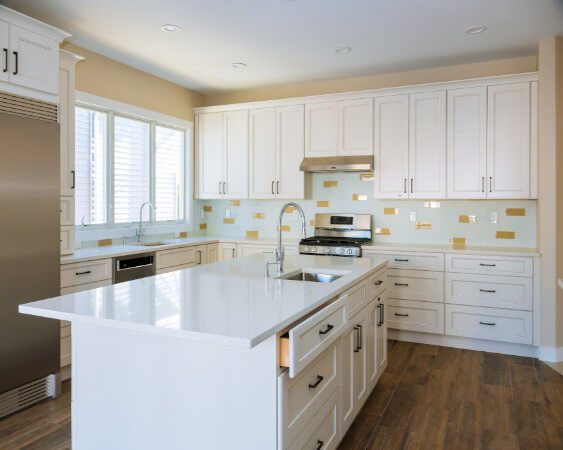
The post Natural Warmth appeared first on Kitchen & Bath Design News.
Did you miss our previous article…
https://www.thekawaiikitchen.com/?p=643
Scenes from supersalone
Though this fall’s gathering at Salone in Italy was an abbreviated version of the annual event, visitors were wowed by what they saw and got a taste of what is to come. According to Maria Porro, the new president of Salone del Mobile.Milano, supersalone was not to be viewed as a smaller event, but rather as a special edition of the massive event – “the trade show reimagined.”
Held in September at the Rho Fairgrounds in Milan, the whole show – which was planned over the course of three months – had a different vibe than its predecessors. Held in just four exhibit halls, booths were scaled down and encouraged to follow an “art gallery” theme, allowing visitors to view displays from a comfortable distance if preferred. All surrounding rest and eating areas were fabricated from raw wood, a commitment to sustainability that allowed all of the materials to be disassembled and used again.
More than 60,000 attendees walked the floor, 30 percent of them from 113 countries other than Italy. All attendees adhered to a strict COVID-19 protocol, which included a check of vaccination cards or COVID testing at the gate and masks worn within the halls. Exhibitors included 425 brands, 18 percent of which were from countries other than Italy.
The new Salone del Mobile.Milano digital platform also played a decisive role during the event, used by an unprecedented number of visitors both at the fair and remote, noted show organizers.
“It was important to take that first but decisive step, to make our presence felt and send a signal to the country as a whole,” stated Porro. “Deciding to go ahead with this ‘supersalone’ took a good dose of courage and meant taking on a lot of responsibility – for the system as a whole and for the entire supply chain, which needed a physical and concrete occasion, not just symbolic and digital, to press the accelerator for a restart.” She added that the show organizers will use what they learned from this event to discover what works and what doesn’t, as well as what is missing. The result will be reflected in the full-sized 60th edition of Salone del Mobile.Milano, planned for April 5-10, 2022. 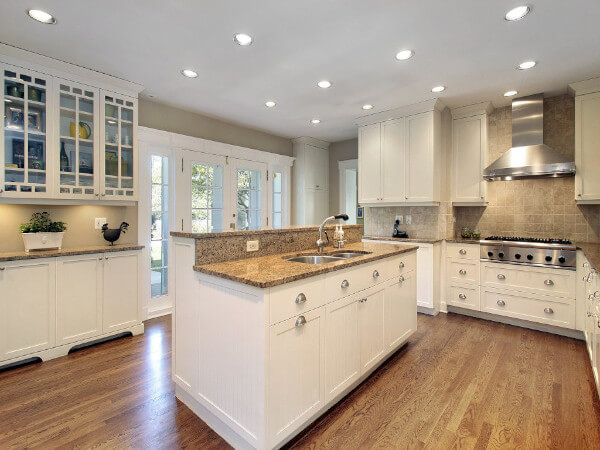
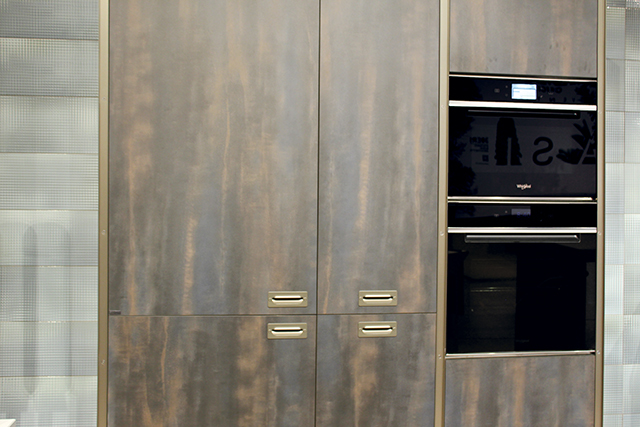
Scavolini
Photos: Cammi Shaw
TREND: Metallic Finishes, Textured Finishes, Bold Colors
Cabinets got new life, with textured finishes, bright colors and matte surfaces among the displays. Metallic looks drew significant attention for cabinets, with copper tones and patinated metal looks interpreted on doors and drawers. Bright colored surfaces made bold statements in a number of other product categories.
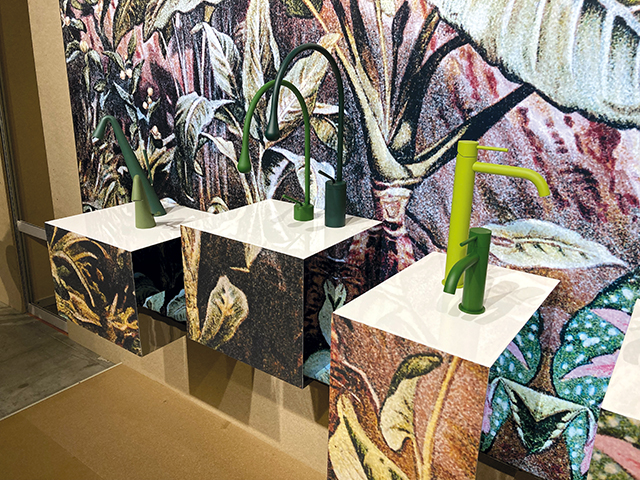
Products Inspired by Nature
Booths and products embraced the great outdoors, with bold prints and natural settings acting as backdrops to earthy colors and nature-inspired products. Weathered woods, rugged stones and all things green were front and center, including a tree that acts as the focal point of the kitchen.
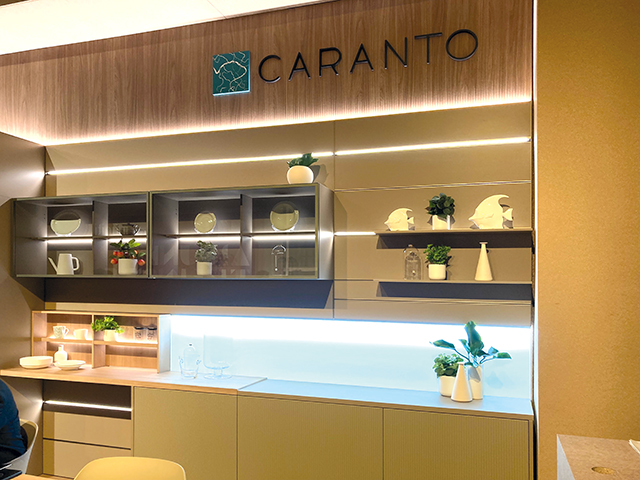
Caranto
Stylish Storage
The juxtaposition of open display and hidden spaces was a key theme on the show floor. Beautifully lit shelving and glass-front cabinets with modern trim were prevalent, providing opulent opportunities to show off prized possessions. Just as captivating was the clever and discreet storage, or the kitchens that disappeared completely behind elegant doors and sliding countertops.
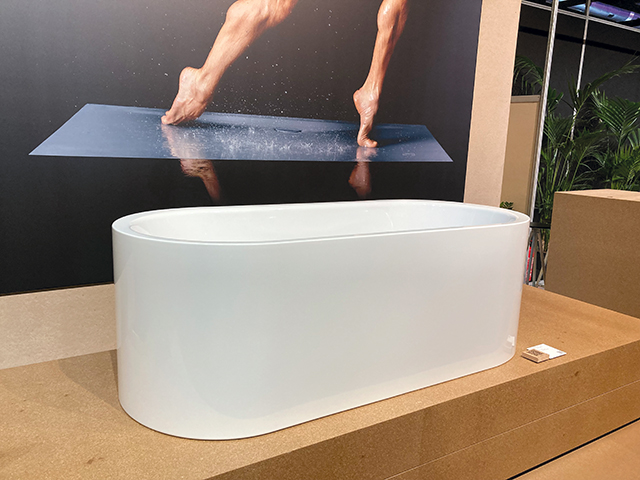
KALDEWEI
Spa Products
In an atmosphere of safety, wellness continued to be top of mind, and products on the show floor did not disappoint. Whether the interest was in totally decked-out pampering with custom designs or a more whimsical take on taking care, a range of products were examined and noted by show attendees.
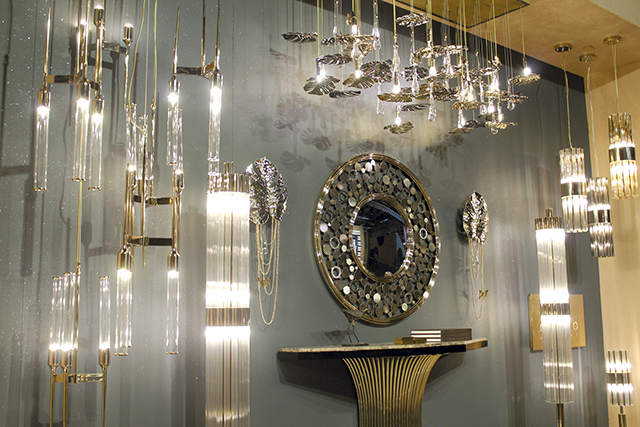
Castro Lighting
Lighting it Up
Accessories and lighting delivered a modern vibe, with LEDs expanding the scope of what is possible in design. The finishing touches to any space, on display were products that can add significant impact or just the right element to complete a room.
The post Scenes from supersalone appeared first on Kitchen & Bath Design News.
Did you miss our previous article…
https://www.thekawaiikitchen.com/?p=626
The Art of Japandi
Sometimes two great styles are better than one. That’s what happens when the raw functionality of Scandinavian design fuses with Japanese nature-suffused simplicity, and it’s a look that fits American kitchens like a glove. Designers say it creates wonderful zen, with some famous Scandi and Japanese variants adding warmth and interest to sleek minimalism.
At first glance it may seem an unlikely design union, since Japan and Scandinavia are on opposite sides of the globe. But, in actuality, their design sensibilities are remarkably similar, and Denmark, especially, has had a close trade relationship with Japan for hundreds of years. The Danish design museum in Copenhagen even devotes exhibit space to Japanese design.
Thomas Lykke of OEO Studio in Copenhagen, Tokyo and Kyoto applauds the design fusion of the two countries, but dislikes that it’s dubbed a trend.
“Trends tend to pass by,” he says. “The Japanese-Danish connection goes far beyond that. I call it shared DNA. Meticulous craftsmanship and attention to details, simplicity and timelessness are deep-rooted in both countries’ culture. We want design that will be relevant 50 years from now. And we are, in our hectic lives, looking for meaningful ways to live, through craftsmanship and rituals, whether that’s a tea ceremony in Kyoto or a coffee break in Copenhagen. Also, neither country has vast natural resources, so we respect what we have and work with it.”
Although Japandi at its roots is the epitome of minimalism, two special concepts set it apart. One is “hygge,” a Danish word now known by designers everywhere, meaning cozy comfort. In Scandinavia this is achieved with lots of textures and touches of color. The other is wabi sabi, the Japanese concept of finding beauty in something imperfect. This could be a well-loved heirloom, perhaps a piece of furniture or a well-used utensil. Although Scandinavians don’t talk about wabi sabi, they, too, love to let the patina of something old and well-loved add charm to a space.
Cabinetry in a Lykke kitchen is always the main event. In one kitchen, for example, cabinets aspire to be more a piece of furniture that fits naturally into living environments rather than a stand-alone kitchen. It combines simplicity and refined, contrasting materials. Lykke calls it “a quality culinary space rather than merely a show kitchen.” Another kitchen features modular cabinets, a popular concept in European homes. The modules are sectioned using slender metal dividers and sit on metal plinths creating a light, floating look.
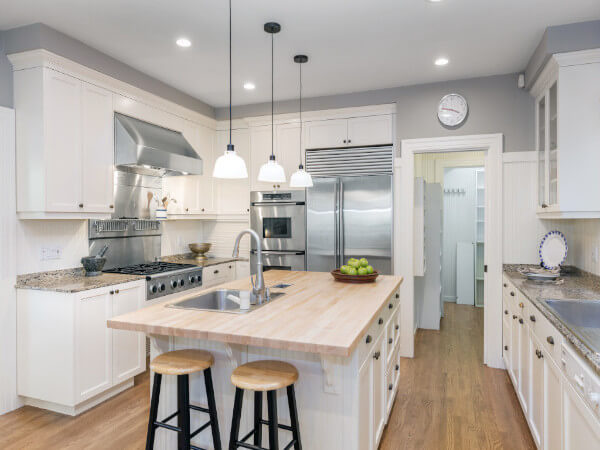
A tiny concrete cave of a New York City apartment is turned into a work of art by architect Andrew Mikhael, who used walnut not just for cabinetry but also for structural elements. The concrete ceiling couldn’t accommodate recessed lighting, so he installed LED tape lights in channels and then surrounded them with walnut slats. The angled walnut wall was designed to reference a drawn-back curtain revealing the sculptural space.
Modern Nostalgia
When a 30-something guy bought a tiny, concrete cell of an apartment on New York City’s Upper East Side, he turned to architect Andrew Mikhael for help. The client showed Mikhael photos from his grandmother’s home, a place that inspired wonderful memories. When Mikhael saw the grandmother’s Danish serve ware and the simple, elegant mid-century furnishings, he knew exactly what to do.
“Since he loves to have people over and cook and bake for them, I knew the kitchen should be an unexpected centerpiece,” reports Mikhael, “a functional work of art. We removed the wall between the galley kitchen and the living room to combine the spaces. We also extended the kitchen into the entryway space, thus expanding the kitchen from 56 square feet to 87 square feet. Next, we installed an angled walnut wall that recalls a partially pulled-back curtain, dramatically revealing the sculptural kitchen.”
Mikhael used walnut throughout the kitchen as an homage to the client’s grandmother. He even wrapped a structural column that couldn’t be moved in walnut. The remarkable workmanship morphs and blends, wraps and anchors, and ultimately hammers out a rhythm.
Lighting was a problem in the apartment. “Because the ceilings were concrete, lighting couldn’t be recessed into them,” explains Mikhael. “As a result, LED tape lights were mounted in long channels one inch below the ceiling, and we then used wood slats to give them a home. The slats don’t just shield the lighting channels, they also hide the unsightly concrete.”
Cabinetry is frameless with simple finger pulls to keep the look minimalist, countertops are matte black Corian, the range and hood are wrapped in stainless steel, and backsplashes are backlit glass.
Mikhael warns that a meticulous carpenter is needed for this kind of work. “I asked my contractor if he minded if I worked with the carpenters at Conex Interiors directly,” he relays, “and he gave me his blessing. They did an incredible job.”
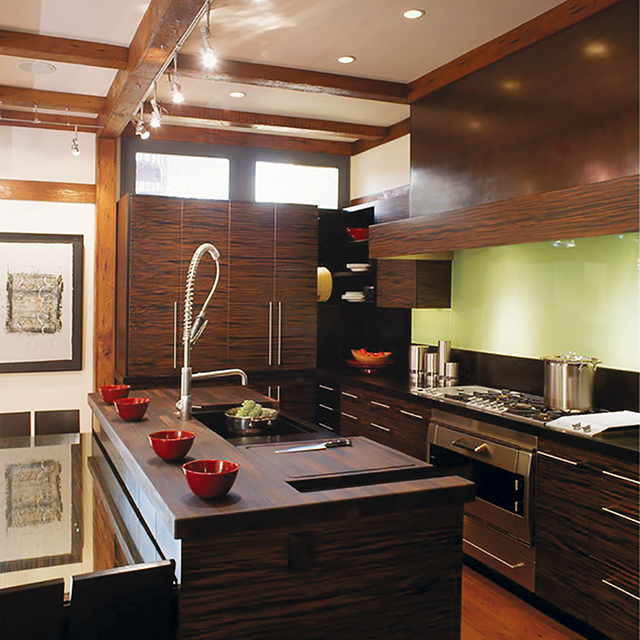
Designer Jennifer Gilmer proves that Japandi minimalism can be elegant and timeless, designing this kitchen with cabinetry crafted from Macassar Ebony, an engineered veneer.
Photos: OEO Studio
Japandi Meets Bungalow
Jennifer Gilmer, an award-winning kitchen and bath designer and principal of Jennifer Gilmer Kitchen & Bath with showrooms in Maryland and Virginia, says that she tells clients, jokingly, that she designs “Western Feng Shui” kitchens. “But I am really quite serious,” she remarks. “The more I learned about Feng Shui, the more I realized that I was unwittingly doing just that. It has become my signature style. So no matter what the design is, and they are all very different, the one thing they have in common is that they make you feel good. That’s Feng Shui.”
Japandi fans will testify to its built-in Feng Shui, so it’s no surprise that Gilmer chose modern Japanese design as the look she wanted for her own home. “This was a Sears bungalow,” she tells. “It was a far cry from the elegant minimalism of Japanese design, but my architect magically made my aspirations possible with a modern addition at the back of the house. There, I got the beautiful and functional space I had visualized for cooking, family life and entertaining.”
Knowing that the cabinetry would be the main focus of the kitchen, Gilmer sought out Premier Custom-Built Cabinetry, which has developed its Mizuki style inspired by Japanese folk houses and traditional Tansu cabinetry.
“We chose an engineered veneer crafted to look like Macassar Ebony,” relays Gilmer. “The wood grain is horizontal, and the ‘striped’ look is so striking that everything else in the kitchen was chosen to complement the cabinetry. No other element was allowed to distract from its beauty. For example, honed black granite was used for the countertops and wenge for the island wood detail. Wenge is similar to cherry, but turns dark over time. The backsplash behind the cooktop is backpainted glass, the farmhouse sink sits on black granite to protect the cabinets from water damage, and dishes are kept on floating shelves.”
She’s especially fond of the pantry, with its retractable bi-fold doors. They open to reveal a countertop, and it houses a steam oven as well as a plethora of cooking accessories. When not in use, the doors are shut so the pantry looks beautiful when entering the kitchen.
The gnarly irregularity of the unclaimed wood floors and beams contrasts with the clean, sleek cabinets, creating precisely the kind of juxtaposition that’s quintessentially Japanese. “So, yes, modern Japanese design and American Bungalow can mix well,” concludes Gilmer. “This space will never go out of style because it honored and melded two very tasteful styles that have proven the test of time.”
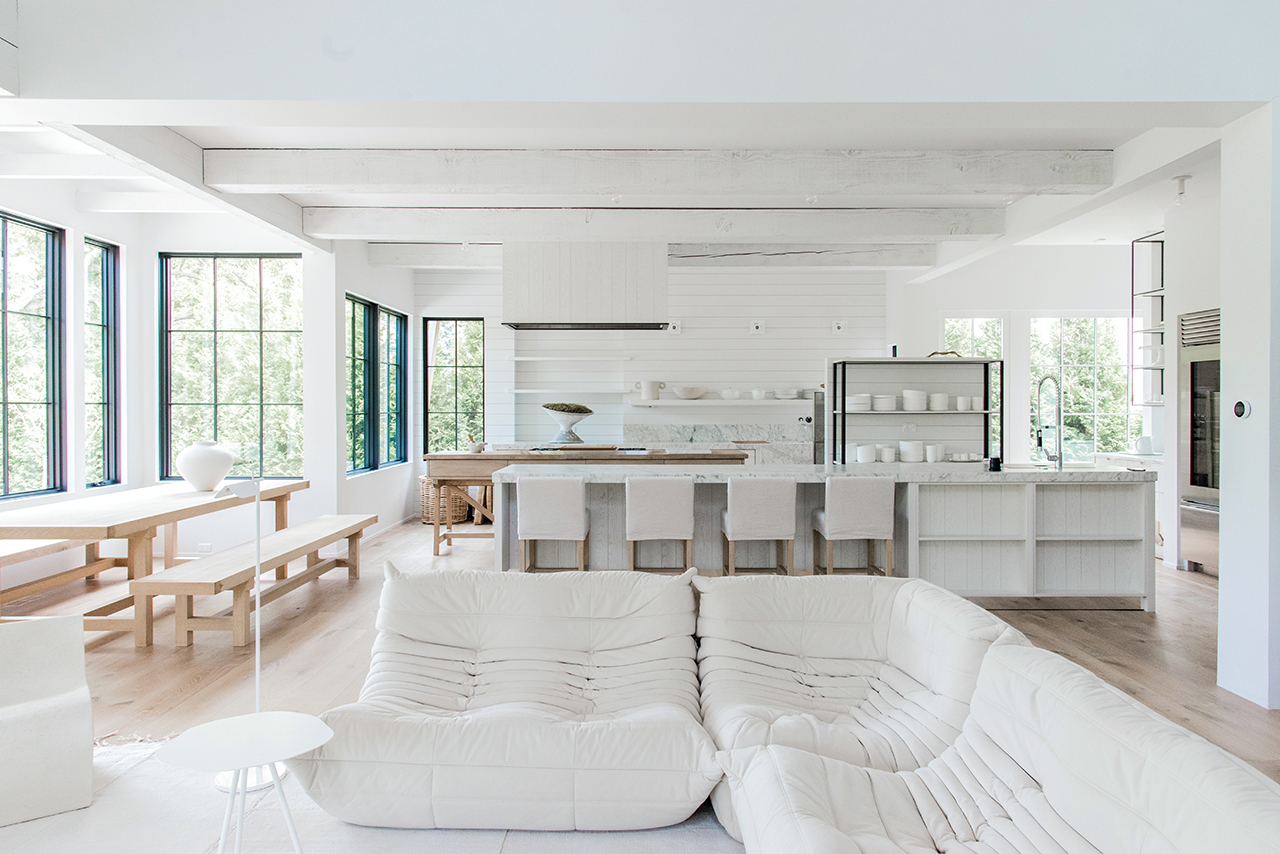
Neutral colors but strong texture contrasts of this Winnetka, IL open kitchen/family room/ dining area by Mick De Giulio reflect the design aesthetics of both Scandinavia and Japan.
Photo: Belen Aquino
Detailed Minimalism
Mick De Giulio, principal of de Giulio Kitchen Design in Chicago, IL, pays visits to near and far locales, and those influences have a way of creeping into his kitchen designs. Japanese and Scandi aesthetics may appear in a design here and there, but in typical De Giulio fashion, inspirations remain just that. From there they are carefully curated and translated into one-of-a-kind designs.
Such is the case of a kitchen he designed in Boston – a classic 19th-century Victorian with a modern addition in the back. “It was just right for a family friendly kitchen,” notes De Giulio. “It’s a contemporary, clean-lined space, but it blends seamlessly with the old part of the house, he remarks. “The design emphasizes asymmetry and horizontals, and the layout is straightforward. Materials play an important role in keeping the space serene. We used light walnut in an organic, almost natural color that we nicknamed ‘Norwegian’ for its sun-bleached, Scandinavian look.”
Of course, everything that De Giulio designs is actually not that simple. A kitchen may look minimalistic, but it’s sure to include exquisite details that don’t shout. The Boston kitchen’s cabinetry, for example, is framed in bronze and contrasts subtly with brushed Iceberg quartzite. The edges of the quartzite counter were mitered to make the slab look extra thick, and a stair-step design at one end provides room for extra seating. The quartzite is repeated on the backsplashes and wrapped the range area.
In another kitchen in Winnetka, IL, De Giulio, worked the wood, creating cabinets with seemingly unfinished, textured surfaces. The space was a riff on a style that the client called Belgian farmhouse, but it is also a look that’s beloved in Scandinavian and Japanese farmhouses. De Giulio achieved it using white oak, cross-cut against the grain. To emphasize the casual, freewheeling look of the light-filled space, he installed legs on the island and placed the cooktop on a table made of reclaimed wood. Finally, he introduced some freestanding stainless steel cabinets for a bit of an industrial vibe.
“There’s nothing sleek about this space,” comments De Giulio. “It is full of textures and juxtapositions. Nobody ever heard of Japandi when this kitchen was designed, but I think it plays into the style. It’s a strong style, especially because it is so adaptable.”
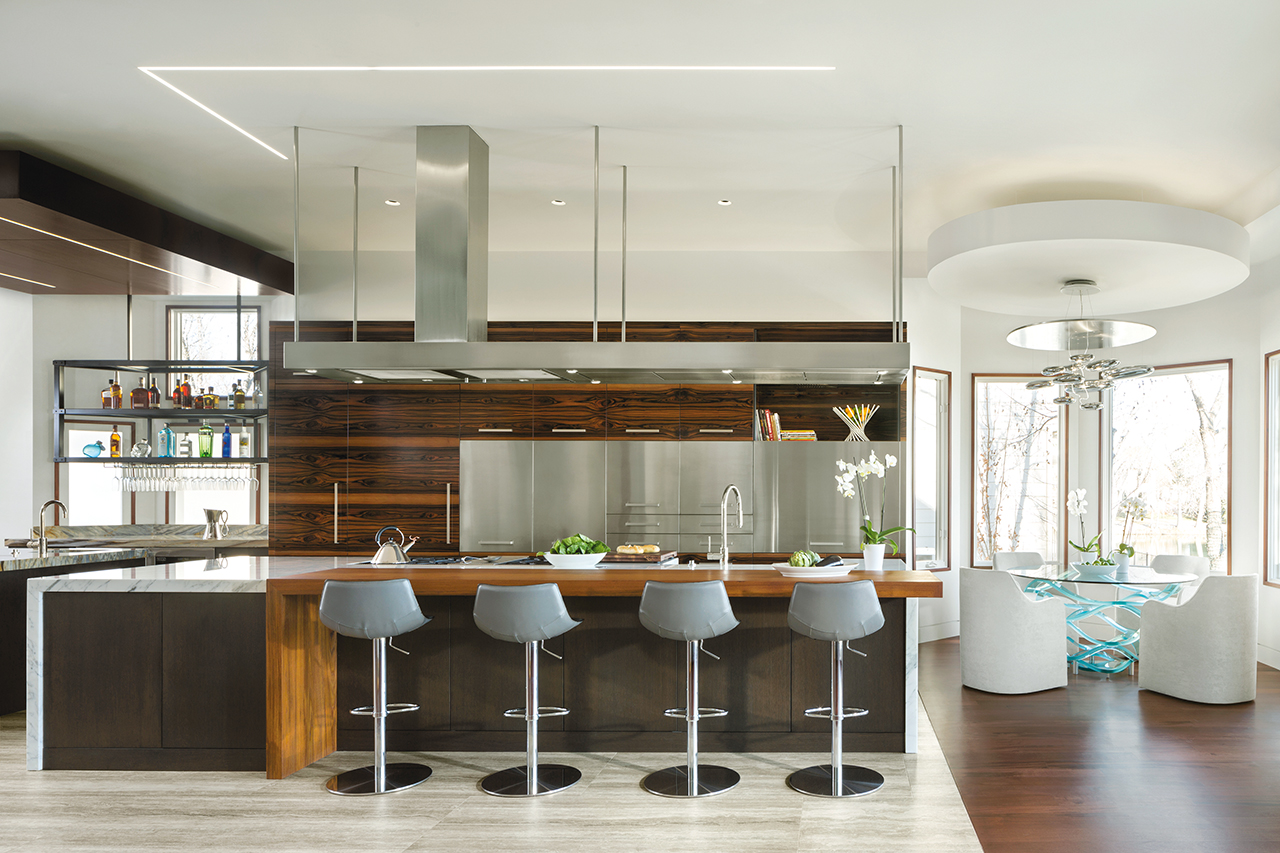
Marcus Otten calls the Royal Ebony veneer used for the cabinets in this kitchen the most beautiful he has ever seen, with unique colors and patterns that dictate that the cabinetry should be the key element.
Photos: Kimberly Gavin
Globetrotting Style
How do a couple of world travelers get a kitchen that reflects their global style, works as a canvas for treasures from many countries and yet functions for everyday life? They get together with award-winning designer Marcus Otten of Exquisite Kitchen Design in Denver, CO. Otten is known for a singular motto: “There are 10,000 different ways to do things, but only one way to do it right.”
For the world travelers, he designed a space where everything tells a story and brings up memories. The couple’s objets d’art are displayed throughout the space, including on floating shelves. The most stunning element, however, is the cabinetry featuring Royal Ebony veneer.
“It’s the most beautiful material I have ever seen,” remarks Otten. “It features unique color patterns and is very rare. There simply are no more logs. This African tree grows slowly and can only be turned into lumber when it’s 100 or so years old.”
Rift-cut oak for other cabinets and the island plus steel accents provide the layers and textures that Otten favors. Altogether, the space contains a lot of the Japandi influence: meticulous craftsmanship, beautiful wood, thoughtful contrasts and artistic accents.
Japandi’s elements are expected to continue to resonate with designers, who find its sophisticated minimalism warmed by craftsmanship and artistry endlessly adaptable. Many homeowners also understand and embrace the concepts of hygge and wabi-sabi, which Japandi fans call “yin and yang” at its best. Gilmer’s reference to it as “great Feng Shui” reflects its staying power in design. 
The post The Art of Japandi appeared first on Kitchen & Bath Design News.